Texas Instruments LFMICROEVALKIT Micro Radio Evaluation Module User Manual s
Texas Instruments Inc Micro Radio Evaluation Module s
Contents
- 1. User Manuals
- 2. manual update
User Manuals
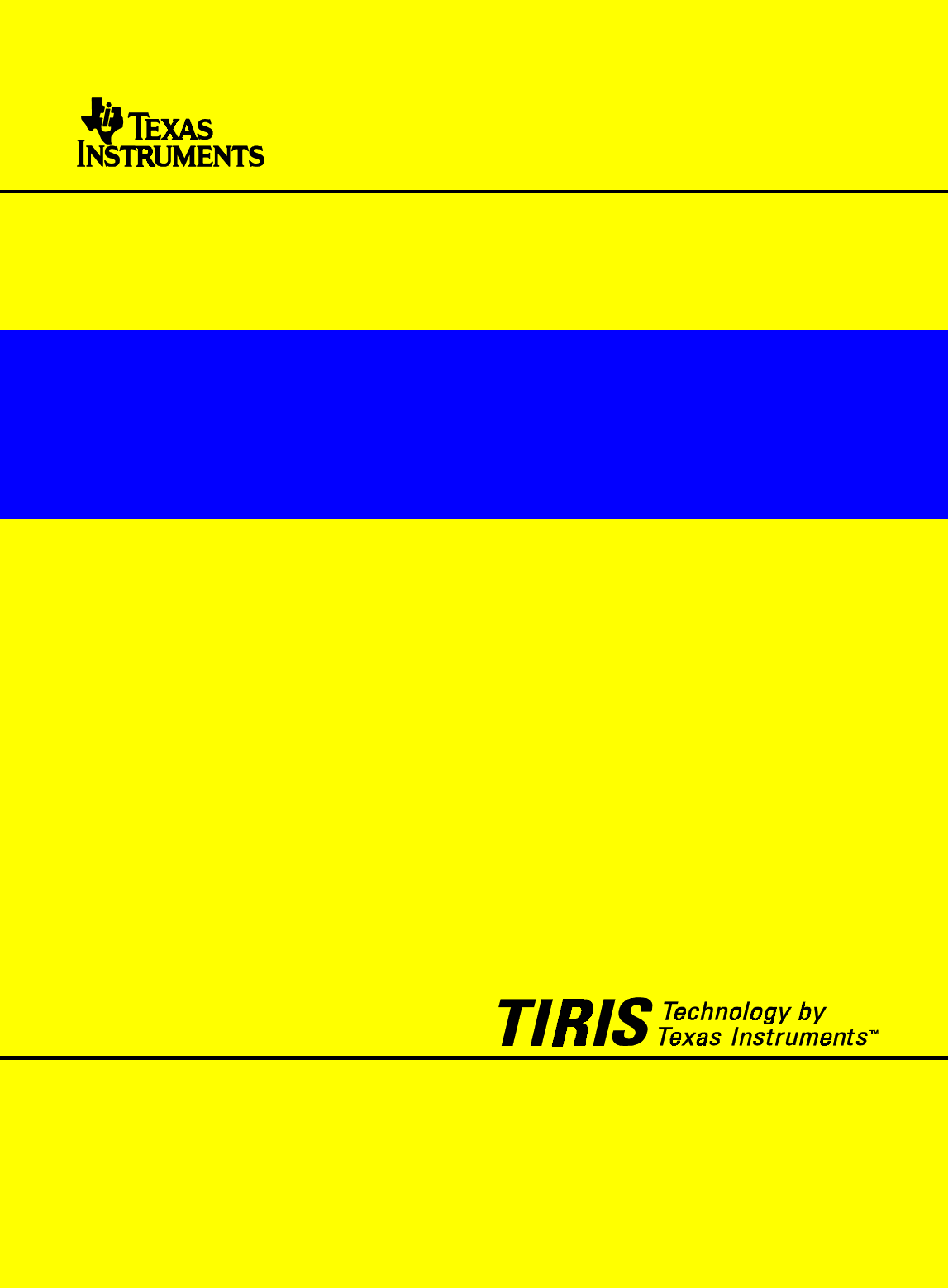
1
May ’00 Preface
Series 2000 Reader System
Micro-reader RI-STU-MRD1
Reference Guide
11-06-21-027 May 2000

2
Micro-reader - Reference Guide May ’00
Edition Three - May 2000
This is the third edition of this manual, it describes the following equipment:
TIRIS Micro-reader Module RI-STU-MRD1
Texas Instruments (TI) reserves the right to make changes to its products or services
or to discontinue any product or service at any time without notice. TI provides cus-
tomer assistance in various technical areas, but does not have full access to data
concerning the use and applications of customer's products.
Therefore, TI assumes no liability and is not responsible for customer applications or
product or software design or performance relating to systems or applications incor-
porating TI products. In addition, TI assumes no liability and is not responsible for
infringement of patents and/or any other intellectual or industrial property rights of
third parties, which may result from assistance provided by TI.
TI products are not designed, intended, authorized or warranted to be suitable for life
support applications or any other life critical applications which could involve poten-
tial risk of death, personal injury or severe property or environmental damage.
The TIRIS logo and the word TIRIS are registered trademarks of Texas Instruments
Incorporated.
Copyright 2000 Texas Instruments Incorporated (TI)
This document may be downloaded onto a computer, stored and duplicated as nec-
essary to support the use of the related TI products. Any other type of duplication,
circulation or storage on data carriers in any manner not authorized by TI represents
a violation of the applicable copyright laws and shall be prosecuted.
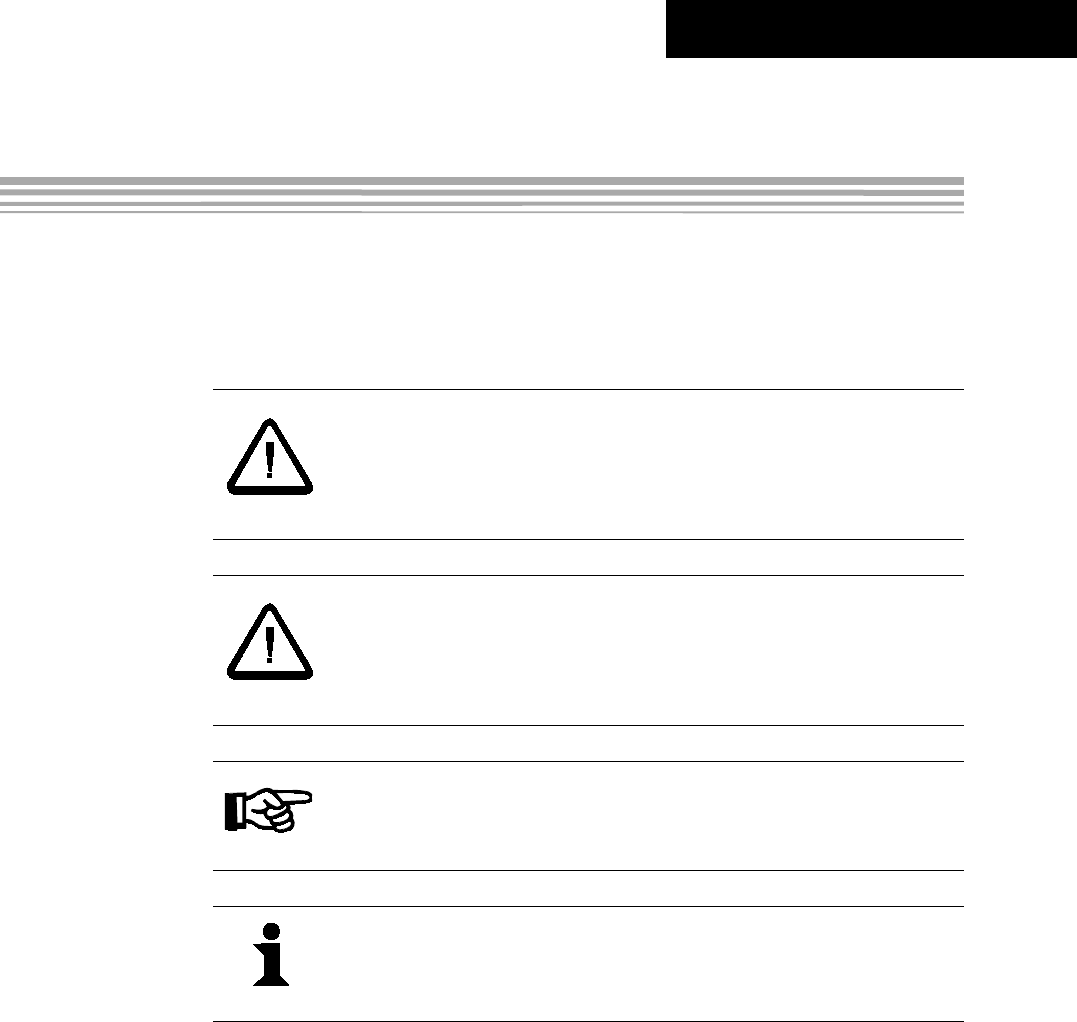
PREFACE
3
Read This First
About This Guide
This manual describes the TIRIS Micro-reader, its goal is to describe the reader, how
it works, how to integrate it and how to use it.
Conventions
If You Need Assistance
Application Centers are located in Europe, North and South America, the Far East
and Australia to provide direct support. For more information, please contact your
nearest TIRIS Sales and Application Center. The contact addresses can be found on
our home page:
http://www.tiris.com
WARNING:
A WARNING IS USED WHERE CARE MUST BE TAKEN, OR A CERTAIN
PROCEDURE MUST BE FOLLOWED IN ORDER TO PREVENT INJURY OR
HARM TO YOUR HEALTH.
CAUTION:
This indicates information on conditions which must be
met, or a procedure which must be followed, which if not
heeded could cause permanent damage to the equipment
or software.
Note:
Indicates conditions which must be met, or procedures which must be
followed, to ensure proper functioning of the equipment or software.
Information:
Indicates information which makes usage of the equipment or soft-
ware easier

4
Micro-reader - Reference Guide May ’00
Document Overview
Page
Chapter 1: Product Description. . . . . . . . . . . . . . . . . . . . . . . . . . . . . . . . . . . . . . 5
1.1 General............................................................................................... 6
1.2 Product Description ............................................................................ 6
1.3 Connector Pins................................................................................... 9
Chapter 2: Communications Protocol . . . . . . . . . . . . . . . . . . . . . . . . . . . . . . . 14
2.1 Protocol PC to Micro-reader............................................................. 15
2.2 Protocol Micro-reader to PC............................................................. 18
Chapter 3: Specifications . . . . . . . . . . . . . . . . . . . . . . . . . . . . . . . . . . . . . . . . . 20
3.1 Recommended Operating Conditions .............................................. 21
3.2 Timings............................................................................................. 22
3.3 Mechanical Data............................................................................... 22
Chapter 4: Transponder Protocols . . . . . . . . . . . . . . . . . . . . . . . . . . . . . . . . . . 23
4.1 Transponder commands .................................................................. 24
4.2 Transponder Responses .................................................................. 27
Chapter 5: Communication Protocol Examples . . . . . . . . . . . . . . . . . . . . . . . 29
5.1 PC to Micro-reader ........................................................................... 30
5.1 PC to Micro-reader ........................................................................... 30
Appendix A:CE Declaration . . . . . . . . . . . . . . . . . . . . . . . . . . . . . . . . . . . . . . . . 35
Appendix B:Demonstration Circuit . . . . . . . . . . . . . . . . . . . . . . . . . . . . . . . . . . 36
Appendix C:Antenna Design . . . . . . . . . . . . . . . . . . . . . . . . . . . . . . . . . . . . . . . 37
List of Figures
Page
Figure 1: Micro-reader Module....................................................................... 6
Figure 2: Micro-reader Pin Connections ........................................................ 9
Figure 3: Block Diagram of the Micro-reader ............................................... 12
Figure 4: Antenna Circuit Block Diagram ..................................................... 13
Figure 5: Top, Front and Side View (measurements in mm) ....................... 22
Figure 6: Read Function............................................................................... 24
Figure 7: Programming Data Format of the 64-bit Read/Write Transponder24
Figure 8: Data Format of the General Read Page Function ........................ 25
Figure 9: Programming Data Format of the MPT......................................... 25
Figure 10: Lock Page of MPT/SAMPT ......................................................... 25
Figure 11: Data Format of the Selective Read Page Function..................... 26
Figure 12: Data Format of the Selective Program Page Function ............... 26
Figure 13: Data format of the Selective Lock Page function ........................ 26
Figure 14: RO Read Data Format ................................................................ 27
Figure 15: R/W Read Data Format .............................................................. 27
Figure 16: MPT/SAMPT Read Data Format ................................................ 27
Figure 17: Micro-reader Demonstration Circuit ............................................ 36
List of Tables
Page
Table 1: Pin Connections ............................................................................... 9

CHAPTER 1
5
Product Description
Chapter 1: Product Description
This chapter describes the hardware of the Micro-reader. It tells you about the mod-
ule and how to integrate it.
Topic Page
1.1 General..........................................................................................................6
1.2 Product Description.....................................................................................6
1.2.1 Power Supply .........................................................................................7
1.2.2 Antenna..................................................................................................7
1.2.3 Synchronization......................................................................................7
1.2.4 Trigger Mode..........................................................................................8
1.2.5 Continuous Mode ...................................................................................8
1.2.6 Serial Communication ............................................................................8
1.3 Connector Pins.............................................................................................9
1.3.1 Pin Connection Description..................................................................10
1.3.2 Module and Antenna Block Diagrams..................................................12
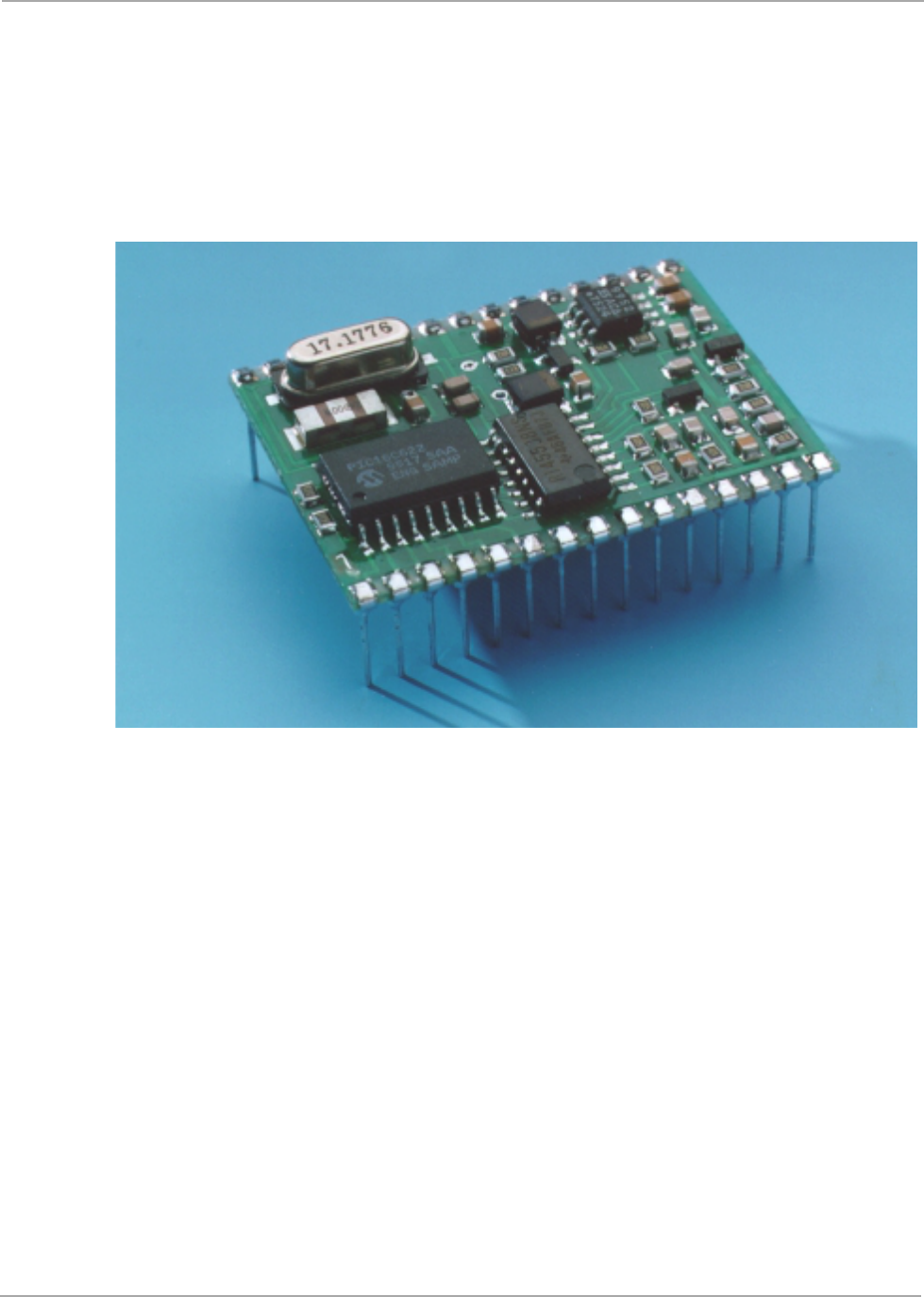
6
Micro-reader - Reference Guide May ’00
1.1 General
The Micro-reader is an intelligent module providing RF and Control functions to read
and program TIRIS transponders. It is equipped with a Serial Communications Inter-
face (SCI) which may be directly connected to commonly used system controllers.
The Micro-reader works together with a 47 µHenry, low-Q antenna, and therefore the
system does not need tuning.
Figure 1: Micro-reader Module
1.2 Product Description
The Micro-reader module is a plug-in module which can be plugged into or soldered
onto an application specific adapter board. It supports serial data communications
between a PC and TIRIS transponders. With its Serial Communications Interface
(SCI) the Micro-reader supports TTL data communications, which with the addition
of a communications driver (for example: RS232 or RS422) allows communication to
a standard interface.
The Micro-reader can be controlled remotely by either providing certain inputs with
the corresponding voltage level or sending commands to the SCI. It can be driven
either with or without synchronization - the synchronization can be either wireless or
wired to enable reliable operation in multi-reader environments. Two outputs show
the reader status and inform the user about a successful command execution. The
Micro-reader supports all available TIRIS LF transponders.
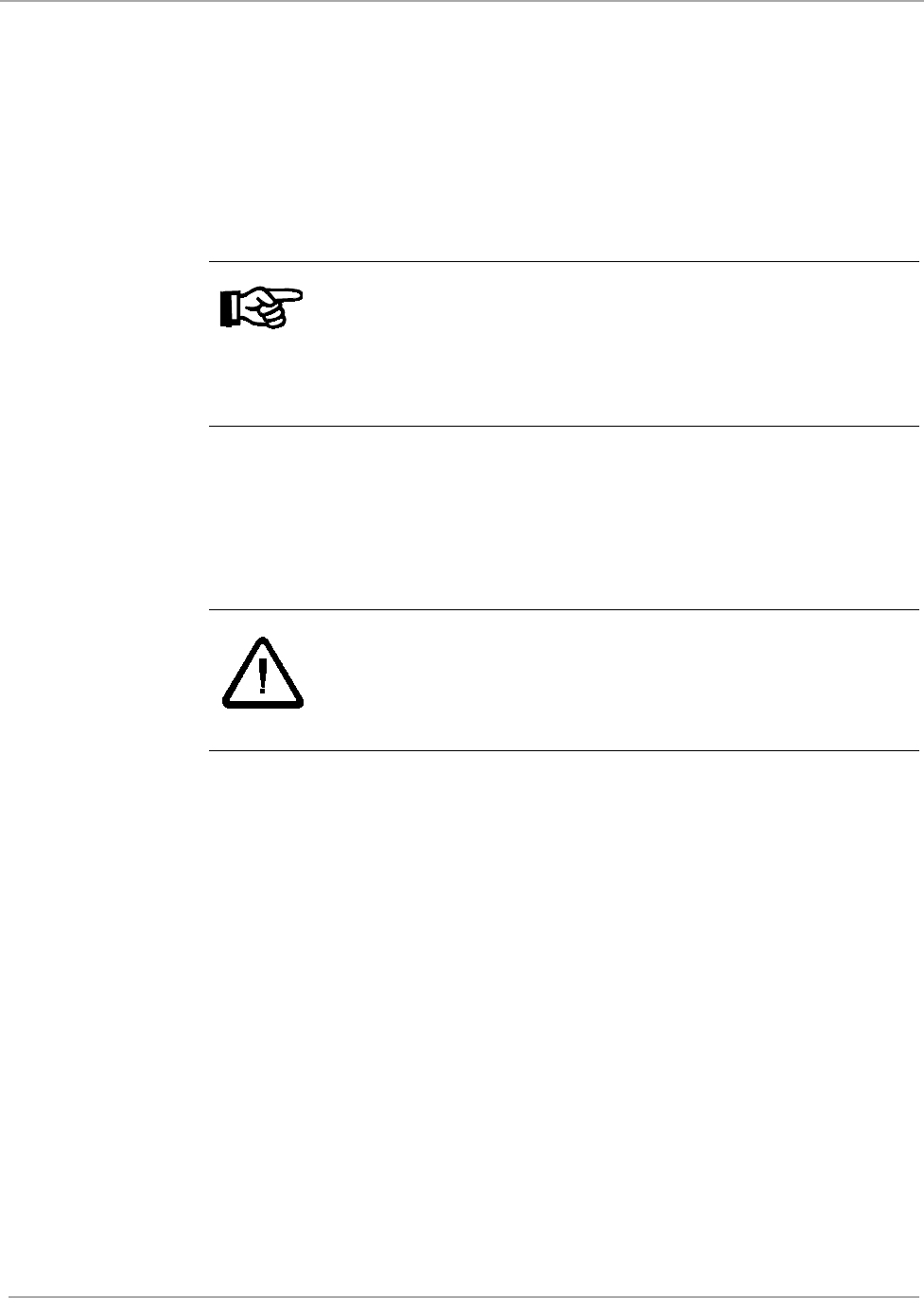
7
May ’00 Chapter 1. Product Description
1.2.1 Power Supply
There are two separate 5V supplies to the Micro-reader, one for the output stage
(VSP) and the other for the logic (VSL). On power up VSL should rise faster than 0.1
V/ms to ensure a reliable operation. The Micro-reader has an on-board reset circuit
which will reset it should the supply fall below 4 V (± 0.2 V).
In order to avoid problems with noise conducted via the supply lines, we recommend
that if a single supply is used, separate connections from a common de-coupling ca-
pacitor are used to feed the Micro-reader.
1.2.2 Antenna
The Micro-reader has been designed for use with a 47 µH antenna with a Q of 10 to
20 to generate the exciter frequency of 134.2 kHz. Because of the low Q the system
does not need to be tuned.
1.2.3 Synchronization
There are two possible methods of wired synchronization:
1. Connect a pulse waveform to all RDEN- input pins of the Micro-readers to be
synchronized. The pulse would normally be at VSL, dropping to GND for 100 µs
every 200 ms.
2. Connect all SYNC outputs to an 'Or' and then connect this as an input to RDEN-
of each Micro-reader to be synchronized.
Wireless synchronization of the Micro-reader is very effective at synchronizing to ad-
jacent readers, however problems may occur if the antennas are positioned such that
a transponder can be within range of two readers at the same time. In this situation
one reader could synchronize with the transponder instead of the other reader.
When the WLSC input is active the Micro-reader is in wireless synchronization mode.
Wireless synchronization can also be switched on/off by a corresponding command
via the serial interface. During execution of this command it has priority over the
WLSC input. After the command execution the status of the WLSC input will be con-
sidered again.
Note:
The RF Module must not be supplied by Switched Mode Power Sup-
plies (SMPS). This is because most SMPS operate at frequencies
around 50 kHz. The harmonics of the generated field can interfere
with the TIRIS receiver. Therefore only use linear regulated power
supplies, or SMPS with a fundamental operating frequency of 200
kHz or higher.
WARNING:
CARE MUST BE TAKEN WHEN HANDLING THE MICRO-READER AS
HIGH VOLTAGES ACROSS THE ANTENNA PINS COULD BE HARMFUL
TO YOUR HEALTH.

8
Micro-reader - Reference Guide May ’00
1.2.4 Trigger Mode
When the Micro-reader is in idle mode it is possible to trigger a single charge-only
read with a power burst duration of 50 ms by taking the RDEN- pin to logic high for
100 µs. The single read will start on the falling edge of the 100 µs pulse.
If a transponder command is sent to the Micro-reader via the SCI while RDEN- is in
a logic high state (waiting position), a falling edge would trigger execution of the com-
mand. In waiting position the Micro-reader can only store one command. This means
that if two commands were to be sent to the Micro-reader while it is in the waiting po-
sition the second command will overwrite the first one.
1.2.5 Continuous Mode
When the CRDM input is active the Micro-reader goes into continuous charge-only
read mode using a power burst duration of 50 ms. The serial data input takes priority
over the CRDM input such that if a serial command is received it will be executed
regardless of the state of the CRDM input. After the execution of the serial data com-
mand the Micro-reader continues with the previous read mode.
In the default continuous read mode, only those valid RO, R/W or MPT IDs that differ
from the previously read ID; or valid IDs read after a “NO READ”, are transferred via
the SCI (Normal Mode). The Micro-reader can be set to transfer all valid IDs that are
read (Line Mode) by means of a corresponding serial data command.
Without synchronization the Micro-reader has a reading frequency of approximately
10 readouts per second using a power burst duration of 50 ms. Timing is given in
more detail in section 3.2.
1.2.6 Serial Communication
The two serial I/O pins are configured for 9600 Baud, 1 start bit, 8 data bits, no parity
and 1 stop bit; they can be connected directly to a communications driver to allow a
half duplex communication with a PC via its serial communications interface (for ex-
ample: RS232 or RS422).
The communications protocol is specified in Chapter 2.
Handshake
The Micro-reader accepts handshake commands Xon/Xoff. When it receives an Xoff
(13hex) the Micro-reader stops its current operation and stops transmitting data via
the serial port. It stays in idle mode until Xon (11hex) is received when it continues with
the previous mode/command. During this idle period the Micro-reader accepts com-
mands via the serial port, however, it waits for its execution until Xon is received. In
this idle period the Micro-reader can store only one command.
Note:
It is not recommended to have both wired and wireless synchroniza-
tion switched on as synchronization could be unreliable.
We recommend the use of bus drivers for wired synchronization with
other Micro-readers and to prevent ESD damage.
Wired or wireless synchronization prolongs the cycle time by typically
20 ms.
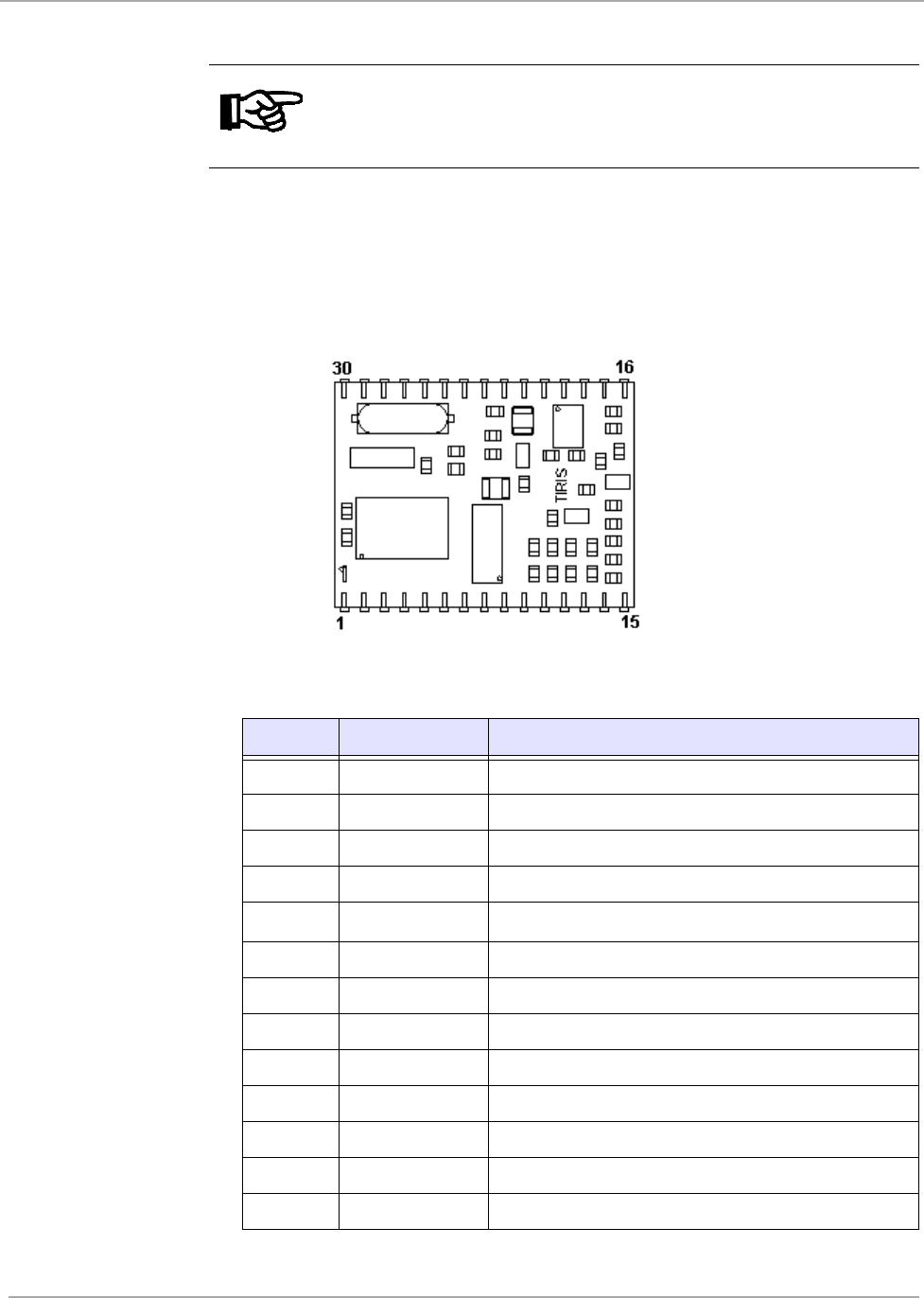
9
May ’00 Chapter 1. Product Description
1.3 Connector Pins
The Micro-reader module has 30 pin connections which are shown in Figure 2 and
listed in Table 1.
Figure 2: Micro-reader Pin Connections
Note:
While receiving a command protocol from the serial port Xon/Xoff is
interpreted as normal data without affecting the serial communication.
Table 1: Pin Connections
Pin Signal Name Function
1 SYNC Output for wired synchronization
2 RDEN- Input for wired synchronization and single read trigger
3 -- Reserved, do not connect
4 RESET- Reset of the Micro-reader
5 RXD Receive Data signal input of serial interface
6 TXD Transmit Data signal output of serial interface
7 -- Reserved, do not connect
8 -- Reserved, do not connect
9 -- Reserved, do not connect
10 -- Reserved, do not connect
11 -- Reserved, do not connect
12 -- Reserved, do not connect
13 -- Reserved, do not connect
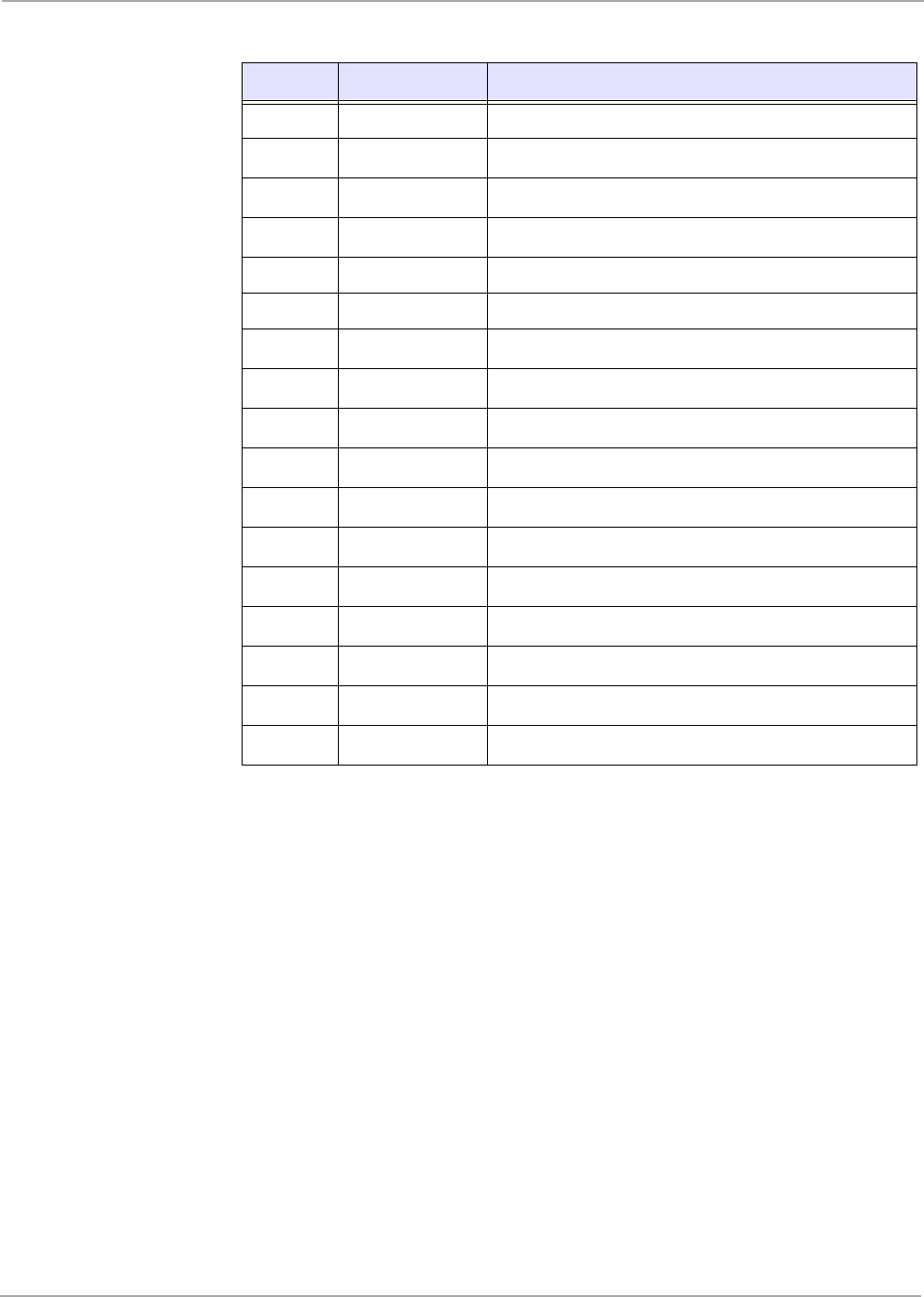
10
Micro-reader - Reference Guide May ’00
1.3.1 Pin Connection Description
SYNC (1) Output for wired synchronization. This output is at GND level until
the Micro-reader starts its read cycle, at which time it goes to VSL
until the complete reading, programming or locking cycle is finished.
RDEN- (2) Input for wired synchronization. Taking this pin to VSL acts as a
hold-off for the Micro-reader's output stage preventing it from
transmitting until the input returns to GND. The Micro-reader only
samples this input at the start of its own reading, programming or
locking cycle, this means that if the input goes to VSL after a cycle
is started, the cycle is not interrupted. RDEN is a high impedance
input and must be tied to GND via a suitable resistor (27 kOhm)
when it is not being used.
When the Micro-reader is idle it is possible to trigger a single read by
taking the RDEN-pin logic high for 100 ms. The single read will start
on the falling edge of the 100 ms pulse.
RESET- (4) Taking this pin to GND holds the Micro-reader in reset. If the reset
pin is not used it can be left disconnected as it is internally pulled up.
Minimum pulse duration to perform a reset is 1 ms. After a reset the
14 -- Reserved, do not connect
15 GND Ground for logic
16 ANT1 Antenna terminal 1
17 ANTCAP Antenna capacitor terminal
18 -- Reserved, do not connect
19 ANT2 Antenna terminal 2
20 -- Reserved, do not connect
21 GNDP Ground for output stage
22 VSP Supply voltage output stage
23 -- Reserved, do not connect
24 VSL Supply voltage logic
25 GND Ground for logic
26 CRD Input for continuous read mode
27 WLS Input to switch wireless synchronization on
28 -- Reserved, do not connect
29 OKT Output to show if a valid ID was read
30 STAT Output to show status of RF-transmitter control signal
Table 1: Pin Connections
Pin Signal Name Function

11
May ’00 Chapter 1. Product Description
processor takes between 28 ms and 132 ms (typically 72 ms) before
it can receive new instructions via the serial communications
interface.
RXD (5) Input configured to receive serial data commands at 9600 Baud, 1
start bit, 8 data bits, no parity and 1 stop bit.
TXD (6) Output configured to transmit serial data at 9600 Baud, 1 start bit, 8
data bits, no parity and 1 stop bit.
GND (15, 25) Pins 15 and 25 are ground for the logic part.
ANT1 (16) Antenna pin for the connection of 47 µH, low Q antennas.
ANTCAP (17) It is possible to use antennas of lower inductance by connecting a
suitable capacitor between ANT1 and ANTCAP. This additional
capacitor (ceramic, 100 VDC) will be in parallel with the 30 nf
resonance capacitor on board the Micro-reader (see Figure 4 and
Appendix C).
ANT2 (19) Antenna pin (GND) for the connection of 47 µH, low Q antennas.
GNDP (21) Pin 21 is ground for the output stage.
VSP (22) Pin 22 is for connecting the positive supply voltage (5 V) for the
output stage.
VSL (24) Pin 24 is for connecting the positive supply voltage (5 V) for the logic
part.
CRDM (26) Supplying pin 26 with a logic high signal causes the Micro-reader to
run in a continuous charge-only read mode (see section 1.2.5 for
more information).
When the CRDM pin is tied to logic low, the Micro-reader is in an idle
state waiting for commands via the serial interface or for a trigger
signal (RDEN-) to start a single read out cycle. CRDM is a high
impedance input and must be tied to either VSL or GND via a
suitable resistor (27 kOhm).
WLSC (27) Pin 27 enables or disables wireless synchronization. To enable the
wireless synchronization, pin 27 must be taken to VSL. When
wireless synchronization is enabled, the Micro-reader will try to
synchronize its transmit signals with any other readers in range. To
disable wireless synchronization pin 27 must be taken to GND. Pin
27 is a high impedance input and must be tied to either VSL or GND
via a suitable resistor (27 kOhm).
Wireless synchronization can also be switched on/off by a
corresponding command via the serial interface. During execution of
this command it has priority over the WLSC input.
OKT (29) This output is set to logic high for approx. 60 ms if a valid
transponder was read. It can be connected to an LED externally to
indicate the result of the read cycle.
STAT(30) Pin 30 is set to logic low when the RF-transmitter is activated.
Supplying an external LED with this signal makes the status of the
Micro-reader visible.
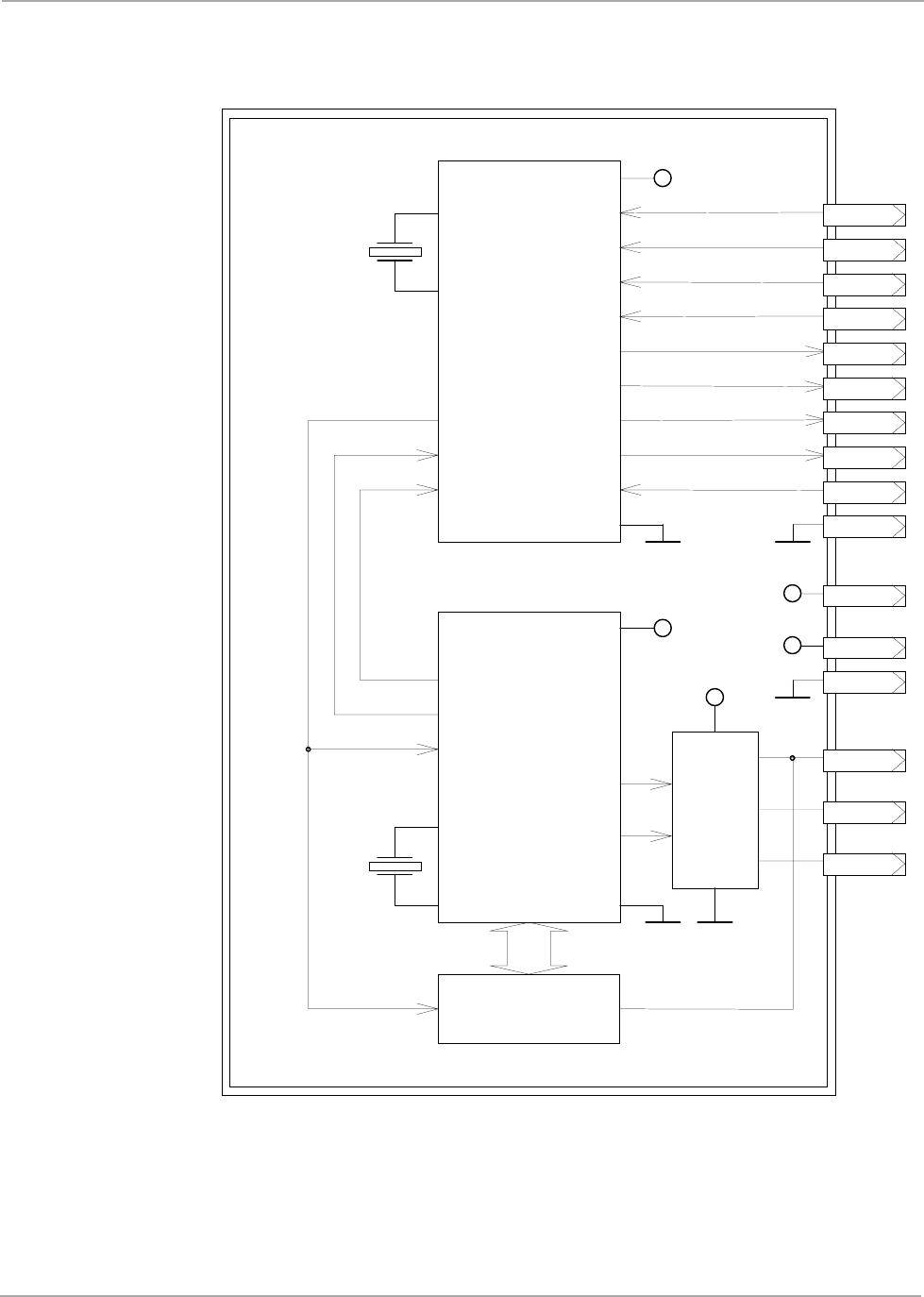
12
Micro-reader - Reference Guide May ’00
1.3.2 Module and Antenna Block Diagrams
Figure 3: Block Diagram of the Micro-reader
RESET-
CRDM
RDEN-
SYNC
OKT
STAT
TXD
RXD
GND
VSL
GNDP
MICRO
CONTROLLER
RFM
ASIC ANT1
ANT2
ANTCAP
Power
stage
Filter
RXCK
RXDT-
TXCT-
VSL
VSP
VSL
WLSC
VSP
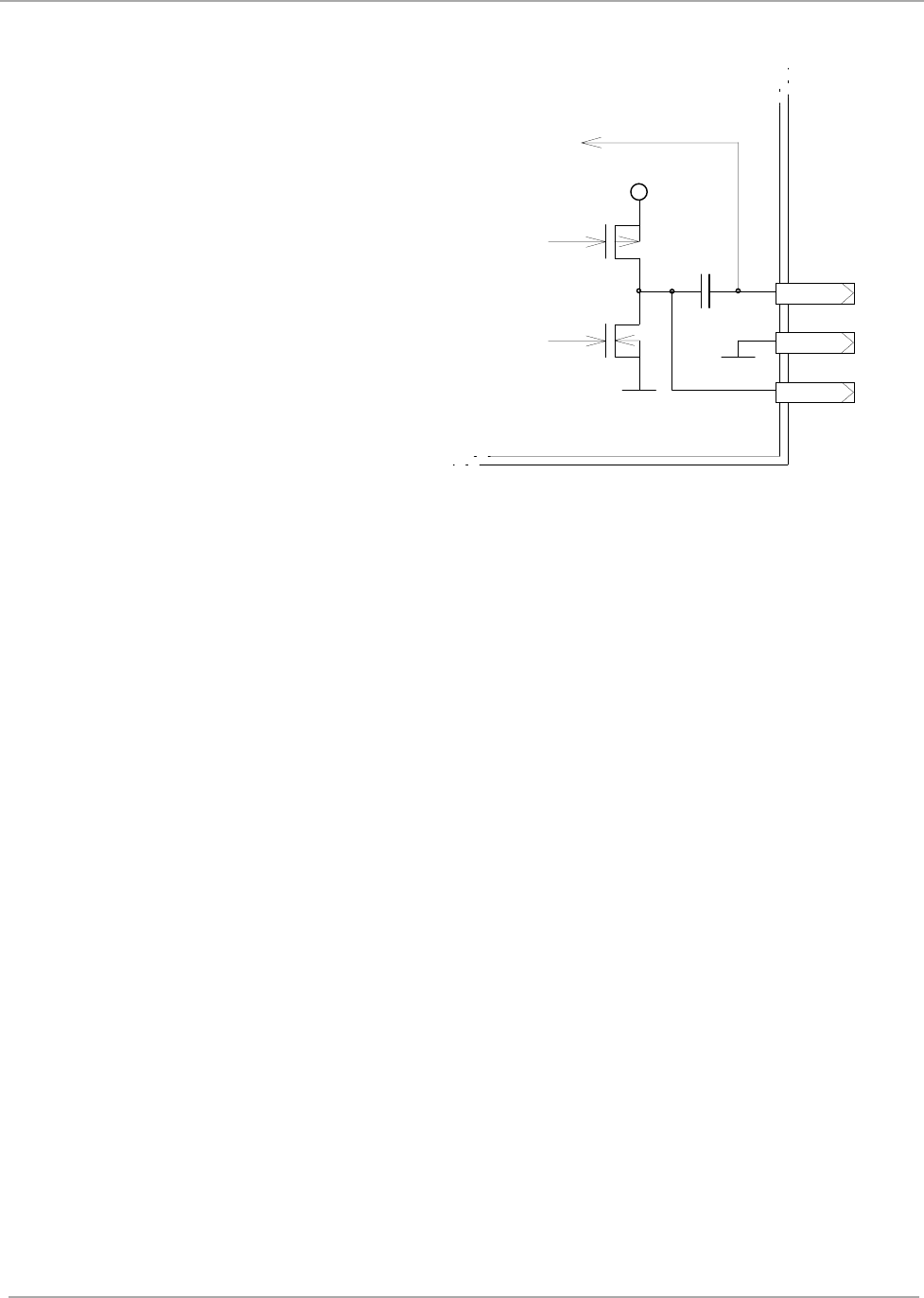
13
May ’00 Chapter 1. Product Description
Figure 4: Antenna Circuit Block Diagram
ANT1
ANT2
ANTCAP
TXHI
from
ASIC
TXLO
from
ASIC
VSP
RECEIVE
RESONANCE
CAPACITOR

CHAPTER 2
14
Communications Protocol
Chapter 2: Communications Protocol
This chapter describes the protocol that you need to use to send instructions from
your PC to the micro-reader. It also describes the protocol that the micro-reader uses
to respond to the PC.
Topic Page
2.1 Protocol PC to Micro-reader .....................................................................15
2.1.1 Start Mark.............................................................................................15
2.1.2 Length ..................................................................................................15
2.1.3 Command Field....................................................................................16
2.1.4 Data Field.............................................................................................17
2.1.5 BCC......................................................................................................18
2.2 Protocol Micro-reader to PC .....................................................................18
2.2.1 Start Mark.............................................................................................18
2.2.2 Length ..................................................................................................18
2.2.3 Status...................................................................................................19
2.2.4 Data Field.............................................................................................19
2.2.5 BCC......................................................................................................19
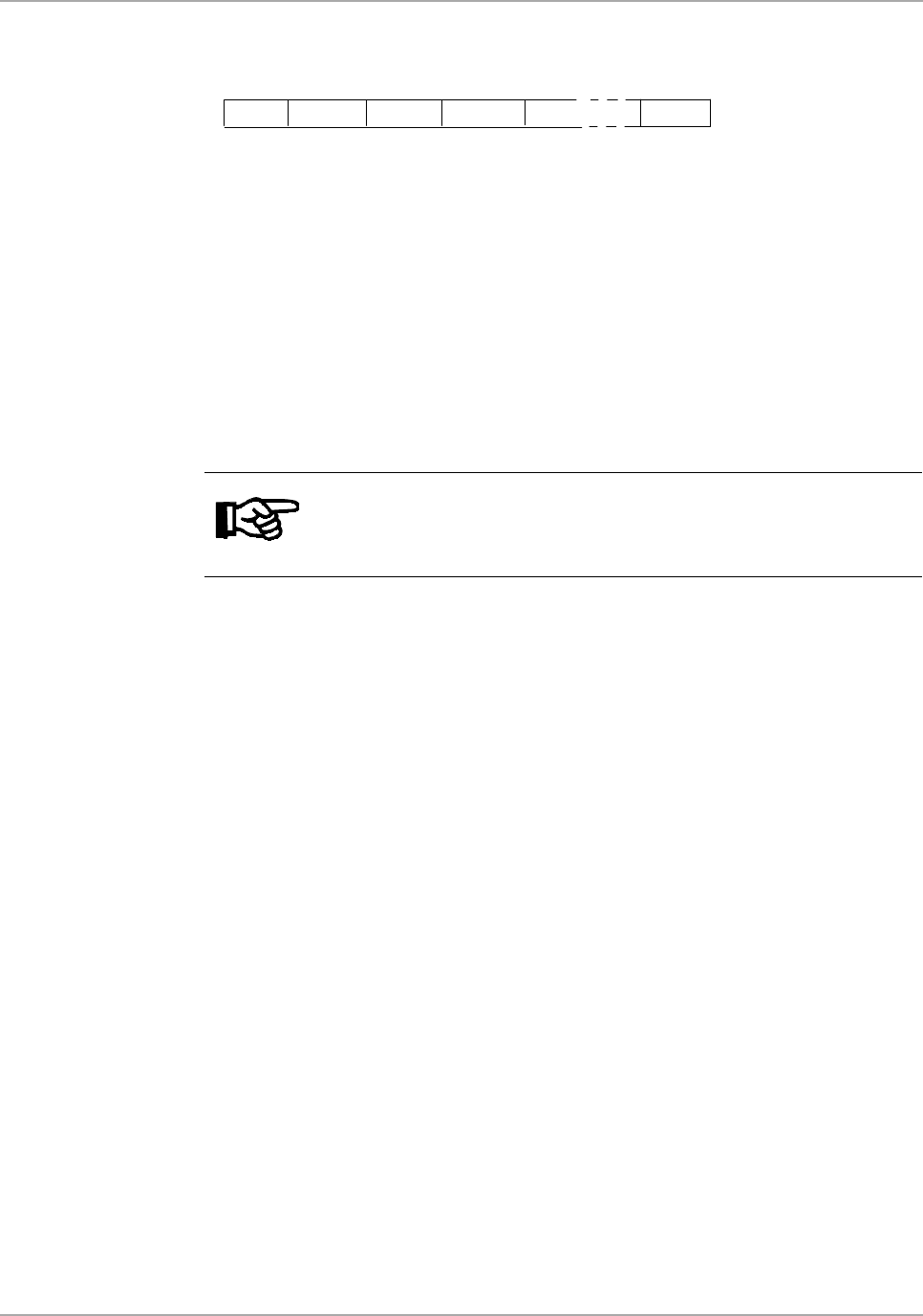
15
May ’00 Chapter 2. Communications Protocol
2.1 Protocol PC to Micro-reader
Byte Contents (hexadecimal value)
0 Start Mark (SOH, 01hex)
1 Length
2 Command Field (1)
3 Command Field (2) (optional)
4(3) Data Field (1)
.
.
N+3(2) Data Field (N)
N+4(3) BCC
Examples are given in section 5.1.
2.1.1 Start Mark
The 'Start-Mark' signifies the beginning of a message. It is represented by the ASCII
character SOH (Start Of Header, 01hex).
2.1.2 Length
The 'Length' byte indicates the length, in bytes, of the following Command and Data
Fields.
Note:
The total number of bytes sent within a protocol frame (including Start
Mark and BCC) is limited to 41 bytes.
Start Length BCC
Cmd 1 Cmd 2 Data

16
Micro-reader - Reference Guide May ’00
2.1.3 Command Field
The 'Command Field(s)' defines the mode in which the Micro-reader operates and
determines the operation that is to be carried out in the transponder. Depending on
the setting of the relevant bits, the corresponding information specified in the Data
Fields will be sent to the transponder or not. Thus all functions of each particular tran-
sponder type can be executed (see 2.1.4 for further information).
Command Field (1)
Bit Use Setting Comment
0/1 Mode/Cmd 00 Perform single command
(MSB,LSB) (for example: single read, program, lock)
01 Read in continuous Normal Mode
10 Read in continuous Line Mode
11 Send Micro-reader S/W version
2 FBCC calculation 1/0 If set, Micro-reader calculates FBCC of the
MPT protocol
3 Power Burst I 1/0 If set, needs to be determined in Data Field
(see 2.1.4)
4 Power Pause Duration 1/0 If set, needs to be determined in Data Field
5 Power Burst II 1/0 If set, needs to be determined in Data Field
6 Data 1/0 If set, needs to be determined in Data Field
7 Cmd expansion Field 1/0 If set, Command Field (2) follows
If bit 5 (Power Burst II, for example: for programming and locking) is set, the Micro-
reader automatically operates in single mode. Thus the user is enabled to validate
the programming or lock response before a further cycle is started.
If bit 2 (FBCC calculation) and bit 6 (Data) are set, the Micro-reader automatically cal-
culates a two byte BCC over the data to be sent to the transponder and adds it to the
protocol. When bits 2 and 6 are set the PC must not send the 2 byte FBCC to the
Micro-reader.
Bit 4 (Power Pause Duration) is for future use and must not be set when addressing
standard TIRIS transponders.
Example: E8Hex= 1110 1000BIN
1 1 1 0 1 0 0 0
Perform single command
No FBCC calculation
Power burst I value set in Data Field
Default set to 0
Power burst II value set in Data Field
Data values follows in Data Field
Command Field (2) follows
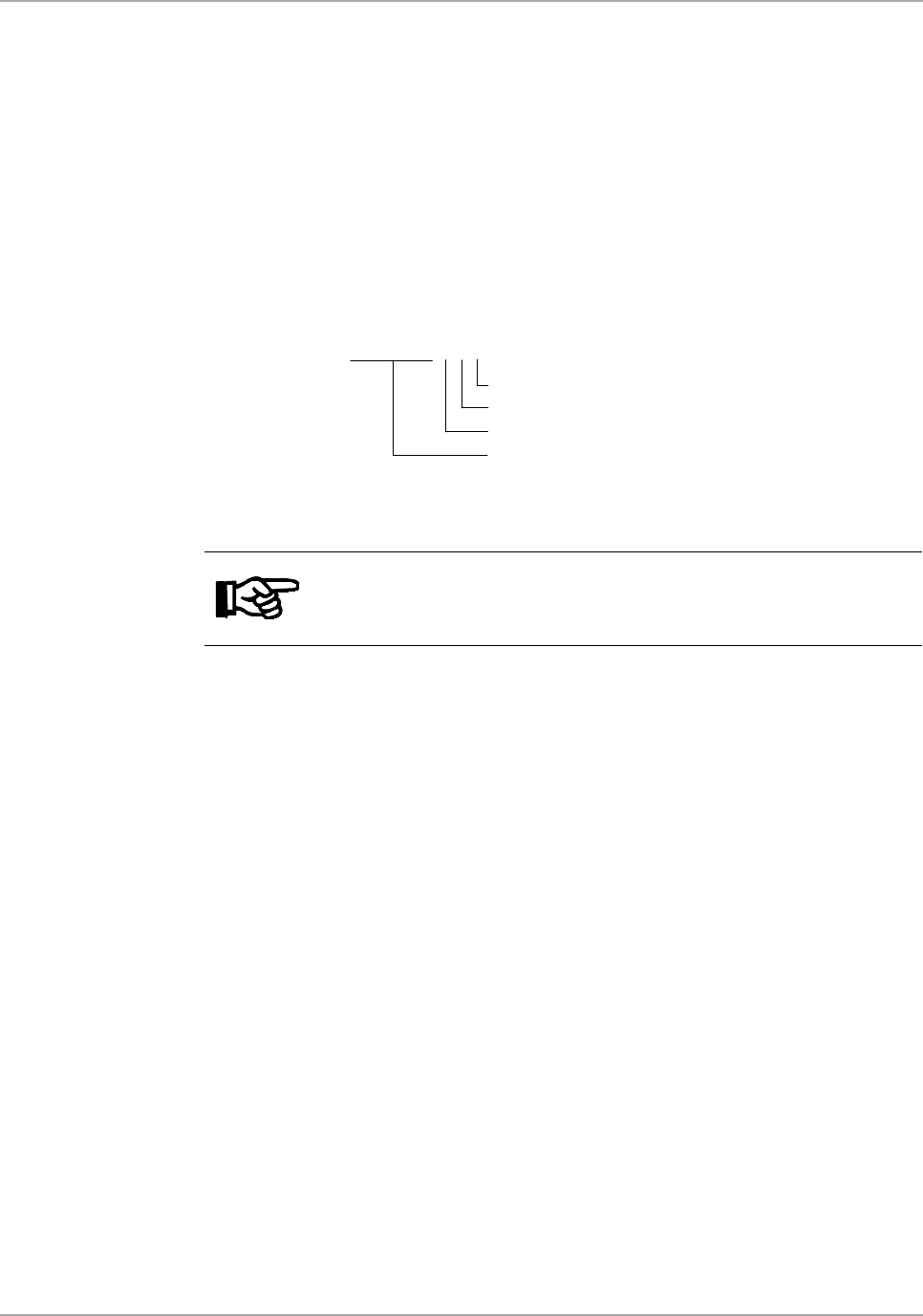
17
May ’00 Chapter 2. Communications Protocol
Command Field (2)
Command Field (2) is only present if bit 7 of Command Byte 1 is set.
Bit Use Setting Comment
0 Special Write Timing 1/0 If set, needs to be determined in Data Field
(see 2.1.4)
1 Wireless Synchronization 1/0 If set, wireless synchronization is used
2 DBCC calculation 1/0 If set, Micro-reader calculates DBCC of the
R/W and MPT write data
3-7 Reserved
If Command Field (2) is not present, standard TIRIS write timings are used and wire-
less synchronization is switched on/off according to the status of input line WLSC.
2.1.4 Data Field
The presence of the relevant data field depends on the setting of the bits in the Com-
mand Field.
If the relevant bit (for example: Command bit 3 “Power Burst I”) is set to “1”, then Data
Field 1 is present defining the Power Burst length. If the relevant bit in the Command
Field is set to “0” the consequent Data Field is omitted, this results in the following
data field being moved forward (decremented) by one.
Data
Field Use Range (dec) Comment
1 Power Burst I 1..255 ms If bit 3 of Command Field(1) is set
2 Power Pause Duration 1..255 ms If bit 4 of Command Field(1) is set
3 Power Burst II 1..255 ms If bit 5 of Command Field(1) is set
4/5 toffLow (LSByte/MSByte) 28..2044 ms If bit 0 of Command Field(2) is set
6/7 tonLow (LSByte/MSByte) 28..2044 ms If bit 0 of Command Field(2) is set
8/9 toffHigh (LSByte/MSByte) 28..2044 ms If bit 0 of Command Field(2) is set
10/11 tonHigh (LSByte/MSByte) 28..2044 ms If bit 0 of Command Field(2) is set
12 # of Data Fields that follow see * If bit 6 of Command Field(1) is set
13 . . Data Fields LSByte first
* The number of Data Fields must not cause an infringement of the total number
of bytes allowed within a protocol frame.
Transponder command protocols are described in detail in section 4.1.
Note:
The settings specified in Command Field (1) and (2) are only valid
during the execution of the current command.
Example: 06Hex= 0000 0110BIN
0 0 0 0 0 1 1 0
No Special Write Timing
Wireless Synchronization is used
Micro-reader calculates DBCC
Bits 3-7 reserved

18
Micro-reader - Reference Guide May ’00
2.1.5 BCC
The 'BCC' field is a one-byte value of the Longitudinal Redundancy Check calcula-
tion (Xor'ed bytes) for the preceding message. The calculation is performed on the
whole message excluding the Start-Mark.
Example: 02 08 32
02 0000 0010
08 0000 1000
--------------------------------
XOR 0000 1010
32 0011 0010
--------------------------------
XOR 0011 1000 = 38 (hex)
2.2 Protocol Micro-reader to PC
Byte Contents (hexadecimal value)
0 Start Mark (SOH, 01hex)
1 Length
2Status
3 Data Field (1) (LSByte)
.
.
.
N+2 Data Field (N) (MSByte)
N+3 BCC
Refer to section 5.2 for examples.
2.2.1 Start Mark
The 'Start-Mark' signifies the beginning of a message. It is represented by the ASCII
character SOH (Start Of Header: 01hex)
2.2.2 Length
The 'Length' byte indicates the length, in bytes, of the following Status and Data
Fields.
Start Length BCCStatus Data

19
May ’00 Chapter 2. Communications Protocol
2.2.3 Status
The 'Status' byte provides feedback from the preceding read or program operation.
Status Bits Setting Comment
0,1 00 Transponder type: RO
(MSB,LSB)
01 Transponder type: R/W
10 Transponder type: MPT/SAMPT
11 Other
2 1/0 If set, Startbyte detected
3 1/0 If set, DBCC O.K.
4 1/0 If set, FBCC O.K.
5 1/0 If set, Micro-reader S/W version follows
6 - 7 Reserved
2.2.4 Data Field
Response # of Bytes
Type in Data Field Comment
RO 8 Identification Data (LSByte first), 4.2.1
R/W 8 Identification Data (LSByte first)), 4.2.2
MPT/SAMPT 9 Identification Data (LSByte first), plus Read Address, see
4.2.3
Other 14 Complete transponder protocol without pre-bits provided
that a valid RO or R/W start byte was detected
No read 0 No Data Fields, not even transponder start byte was de-
tected, status 03hex
S/W version 1 For example: 15hex means S/W version 1.5
Section 4.2 provides an overview of the response telegrams of the current TIRIS
transponder types.
2.2.5 BCC
The 'BCC' field is a one-byte value of the Longitudinal Redundancy Check calcula-
tion (Xor'ed bytes) for the preceding message. The calculation is performed on the
whole message excluding the Start-Mark. An example is shown in section 2.1.5.

CHAPTER 3
20
Specifications
Chapter 3: Specifications
This chapter provides the specifications for the micro-reader, its inputs and outputs,
and its timing.
Topic Page
3.1 Recommended Operating Conditions......................................................21
3.2 Timings .......................................................................................................22
3.3 Mechanical Data.........................................................................................22
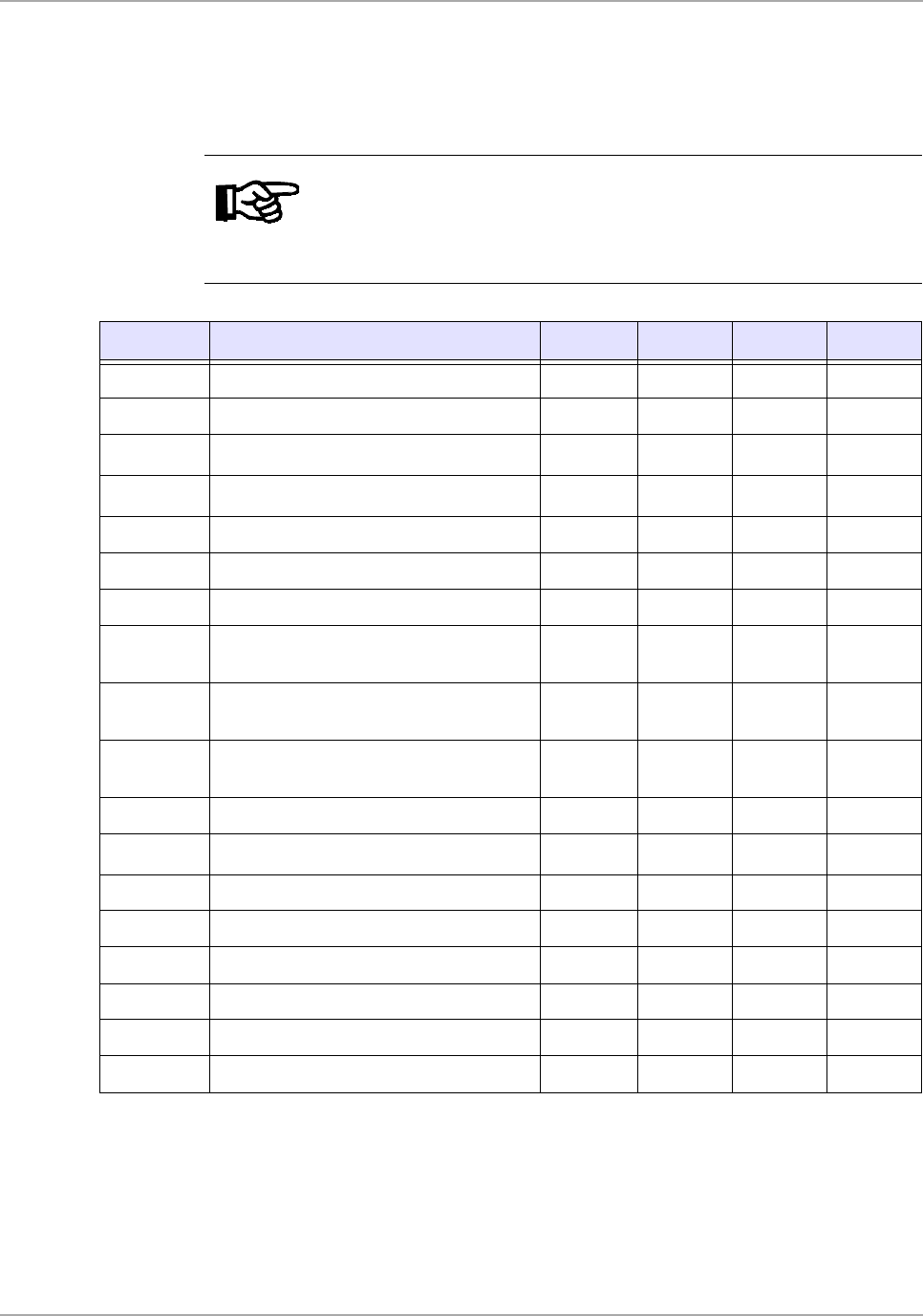
21
May ’00 Chapter 3. Specifications
3.1 Recommended Operating Conditions
Operating free-air temperature range T_oper -25 to +70 ºC
Storage temperature range T_store -40 to +85 ºC
*1 Typical supply current (peak value) for the power stage when the RF transmitter
is switched on (L = 47
µ
H, Q = 12).
*2 Typical supply current for logic when the RF transmitter is switched on.
*3 Typical supply current (average value) of the Micro-reader when the RF transmit-
ter is switched on (L = 47
µ
H, Q = 12).
Note:
Free-air temperature: air temperature immediately surrounding the
Module. If the module is incorporated into a housing, it must be guar-
anteed by proper design or cooling that the internal temperature does
not exceed the absolute maximum ratings.
Symbol Parameter Min. Typ. Max. Unit
V_VSP Supply voltage for power stage 4.5 5.0 5.5 V
V_VSL Supply voltage for logic 4.5 5.0 5.5 V
I_VSP Supply current for power stage - 10*1 -mA
I_VSL Supply current for logic - 30*2 -mA
I_su Output current sunk by an output pin - 5.0 15.0 mA
I_so Output current sourced by an output pin - 5.0 15.0 mA
I_sutot Output current sunk by all output pins - 20.0 60.0 mA
I_sotot I_sototOutput current sourced by all
output pins -20.060.0mA
V_ret VSP start voltage to guarantee power
on reset --GND-
Vrise_ret VSP rise rate to guarantee power on
reset 0.1 - - V/ms
I_idle Supply current with Micro-reader idle - 5.0 - mA
I_act Supply current with Micro-reader active - 100*3 -mA
ViH Input high voltage 0.8 VSL - VSL -
ViL Input low voltage GND - 0.2 VSL -
VoH Output high voltage VSL - 0.7 VSL
VoL Output low voltage GND 0.6 V
Q_Ant Antenna quality factor 10 15 20
L_Ant Antenna inductance value 46.1 47.0 47.9 µH
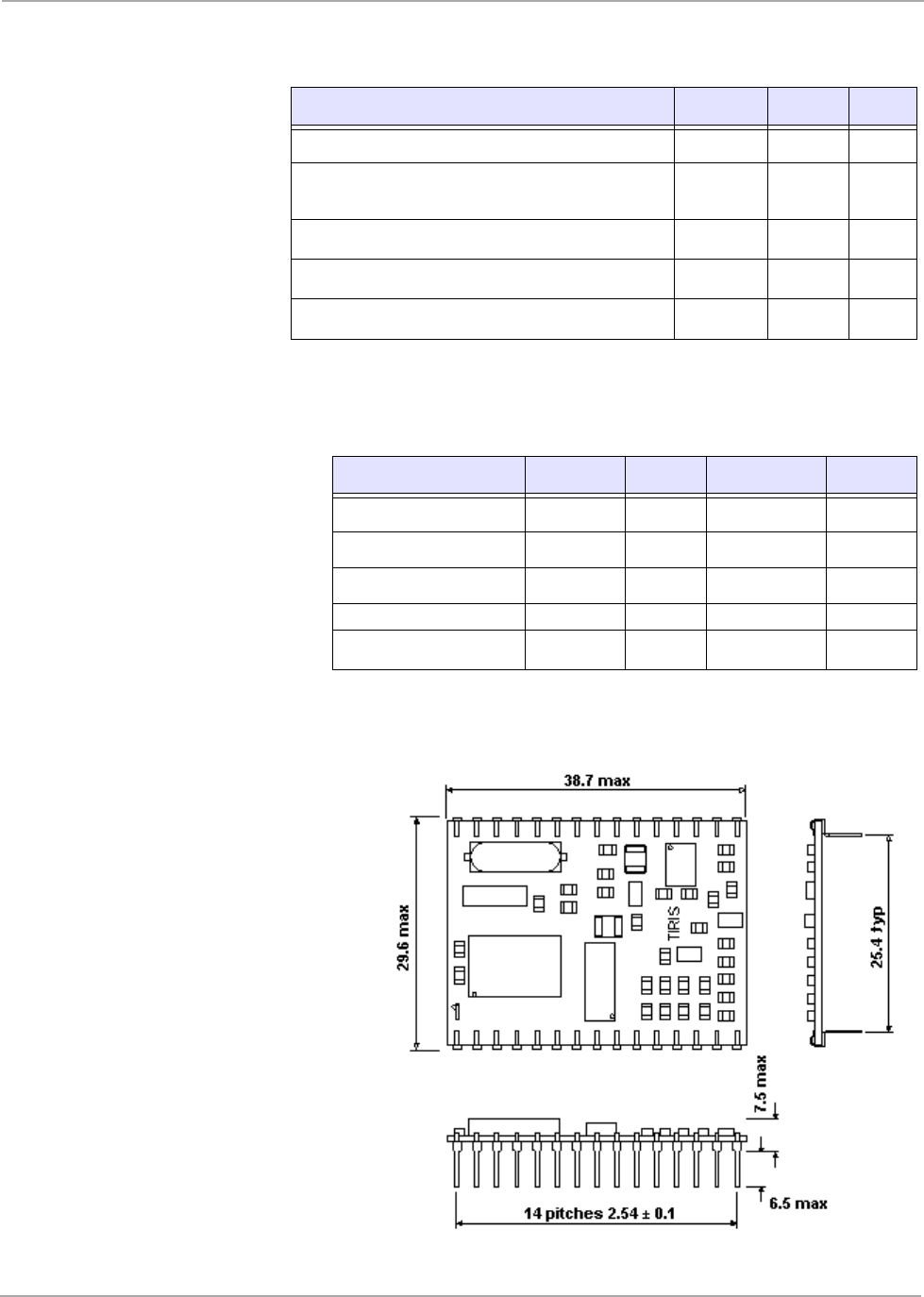
22
Micro-reader - Reference Guide May ’00
3.2 Timings
*1 If an Interbyte time-out occurs the Micro-reader performs a reset.
3.3 Mechanical Data
Recommended finished pin hole size is 1 mm diameter.
Figure 5: Top, Front and Side View (measurements in mm)
Parameter Typical Maxim Unit
Read Cycle time without synch (no read) 100 105 ms
Read Cycle time with synch (no read) 120 175 ms
Read Cycle time without synch (valid read) 170 175 ms
Read Cycle time with synch (valid read) 190 245 ms
Interbyte time-out for serial communication 10*1 ms
Parameter Minimum Typical Maximum Unit
Length 37.9 38.3 38.7 mm
Width 28.8 29.3 29.6 mm
Height including pins 12.5 13.5 14.0 mm
Weight 5.0 Grams

CHAPTER 4
23
Transponder Protocols
Chapter 4: Transponder Protocols
This chapter describes the protocols used when sending commands to the transpon-
der and the protocols used by the transponder when responding.
Topic Page
4.1 Transponder commands ...........................................................................24
4.1.1 Read RO, R/W .....................................................................................24
4.1.2 Program R/W .......................................................................................24
4.1.3 Addressing MPTs/SAMPTs..................................................................24
4.1.3.1 General Read Page of MPT/SAMPT..........................................25
4.1.3.2 Program Page of MPT/SAMPT...................................................25
4.1.3.3 Lock Page of MPT/SAMPT.........................................................25
4.1.3.4 Selective Read Page of SAMPT.................................................26
4.1.3.5 Selective Program Page of SAMPT............................................26
4.1.3.6 Selective Lock Page of SAMPT..................................................26
4.2 Transponder Responses...........................................................................27
4.2.1 Read Only Transponder.......................................................................27
4.2.2 Read/Write Transponder......................................................................27
4.2.3 MPT/SAMPT ........................................................................................27
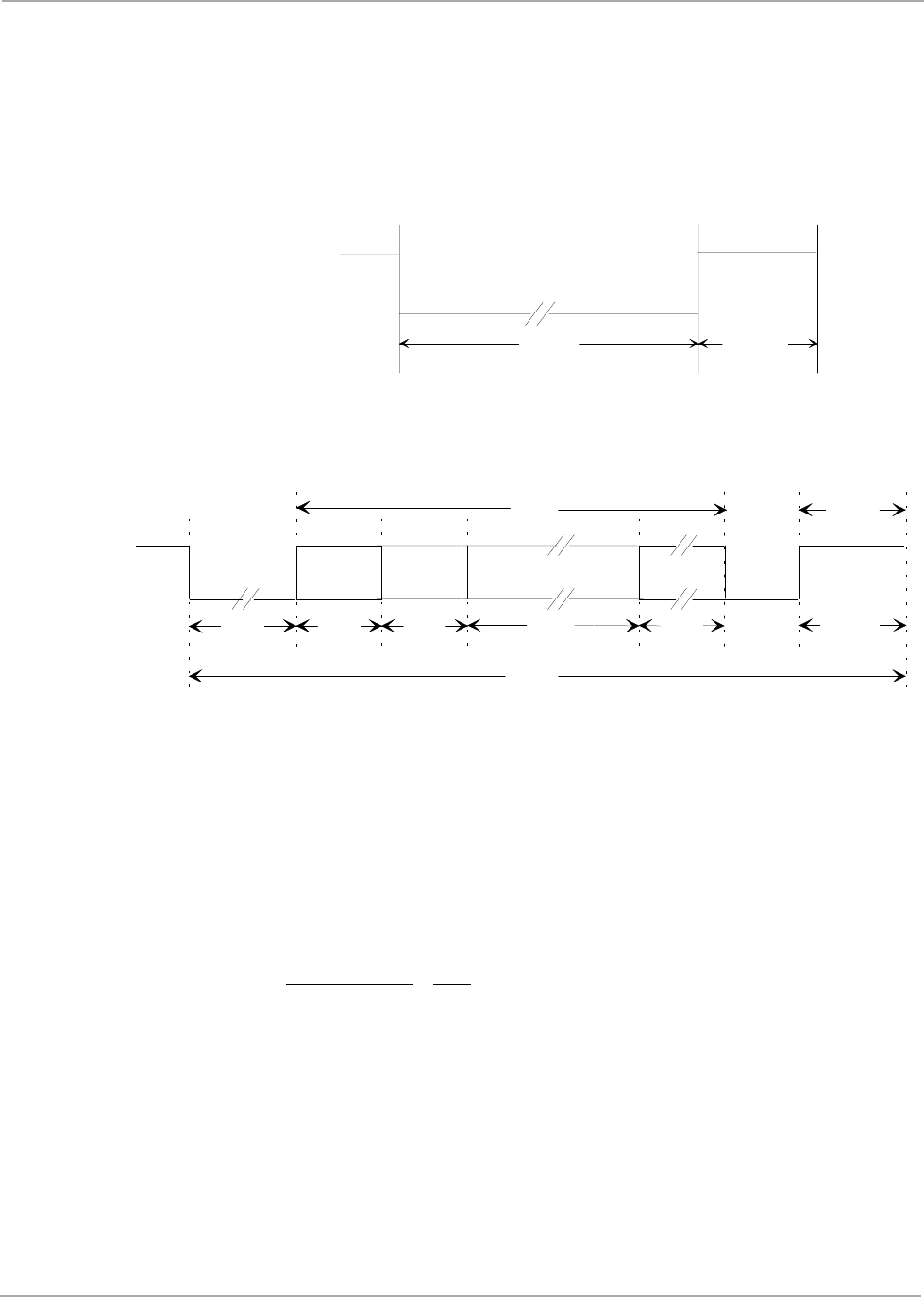
24
Micro-reader - Reference Guide May ’00
4.1 Transponder commands
This section describes the protocols that need to be sent by the PC to the transpon-
der via the Micro-reader in order to execute the required function.
4.1.1 Read RO, R/W
Figure 6: Read Function
4.1.2 Program R/W
Figure 7: Programming Data Format of the 64-bit Read/Write Transponder
Write Keyword : BBhex
Write Password : EBhex
Write Frame : 0300hex
4.1.3 Addressing MPTs/SAMPTs
Since MPT/SAMPTs allow the execution of the different commands applicable to
multiple pages the 'Write Address' needs to be sent within the protocol in order to de-
termine the function to be executed with a specific MPT/SAMPT page.
WRITE ADDRESS
MSB LSB
P P P P P P C C
||
PAGE COMMAND
MSB LSB MSB LSB
Page 1 000001 00 General read page
Page 2 000010 01 Program page
. . . 10 Lock page
Page 16 010000 11 Selective read
Page 17 010001
OFF
ON
READ
50 ms 20 ms
RF TRANSMITTER POWER BURST
READ
20 ms
50 ms
WRITE
KEYWORD
880 16
16 ms 160 ms 32 ms 15 ms
PASSWORD
8
16 ms
112 bit
309 ms
WRITE WRITE
FRAME
WRITE DATA
128 bit
LSB MSB
OFF
ON
POW ER BURST I
PB II
RF TRANSMITTER
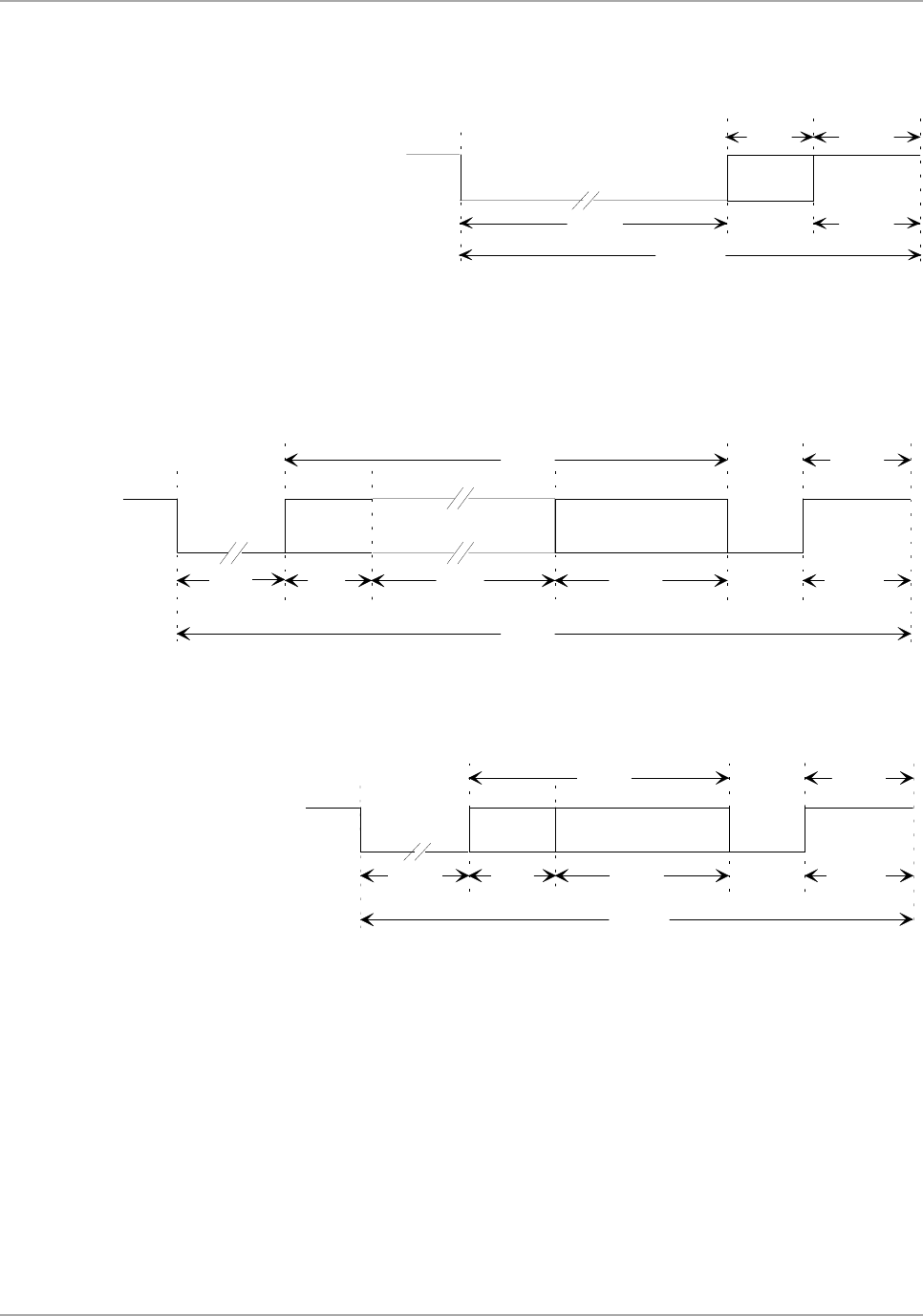
25
May ’00 Chapter 4. Transponder Protocols
4.1.3.1 General Read Page of MPT/SAMPT
Figure 8: Data Format of the General Read Page Function
4.1.3.2 Program Page of MPT/SAMPT
Figure 9: Programming Data Format of the MPT
4.1.3.3 Lock Page of MPT/SAMPT
Figure 10: Lock Page of MPT/SAMPT
50 ms
READ
WRITE
ADDRESS
86 ms
LSB
8 bit 128 bit
20 ms16 ms
ON
OFF
POWER BURST I
RF TRANSMITTER
READ OR
20 ms
50 ms
WRITE
ADDRESS WRITE DATA WRITE FRAME BCC
880 16
16 ms 160 ms 32 ms 15 ms
293 ms
104 bit 128 bit
LSB
DISCHARGE
MSB
RF
OFF
ON
TRANSMITTER
POW ER BURST I
PB II
50 ms
WRITE
ADDRESS
8
WRITE FRAME BCC
16
32 ms
133 ms
24 bit
READ OR
20 ms
128 bit
DISCHARGE
15 ms
LSB
16 ms
MSB
ON
OFF
POWER BURST I
RF TRANSMITTER PB II
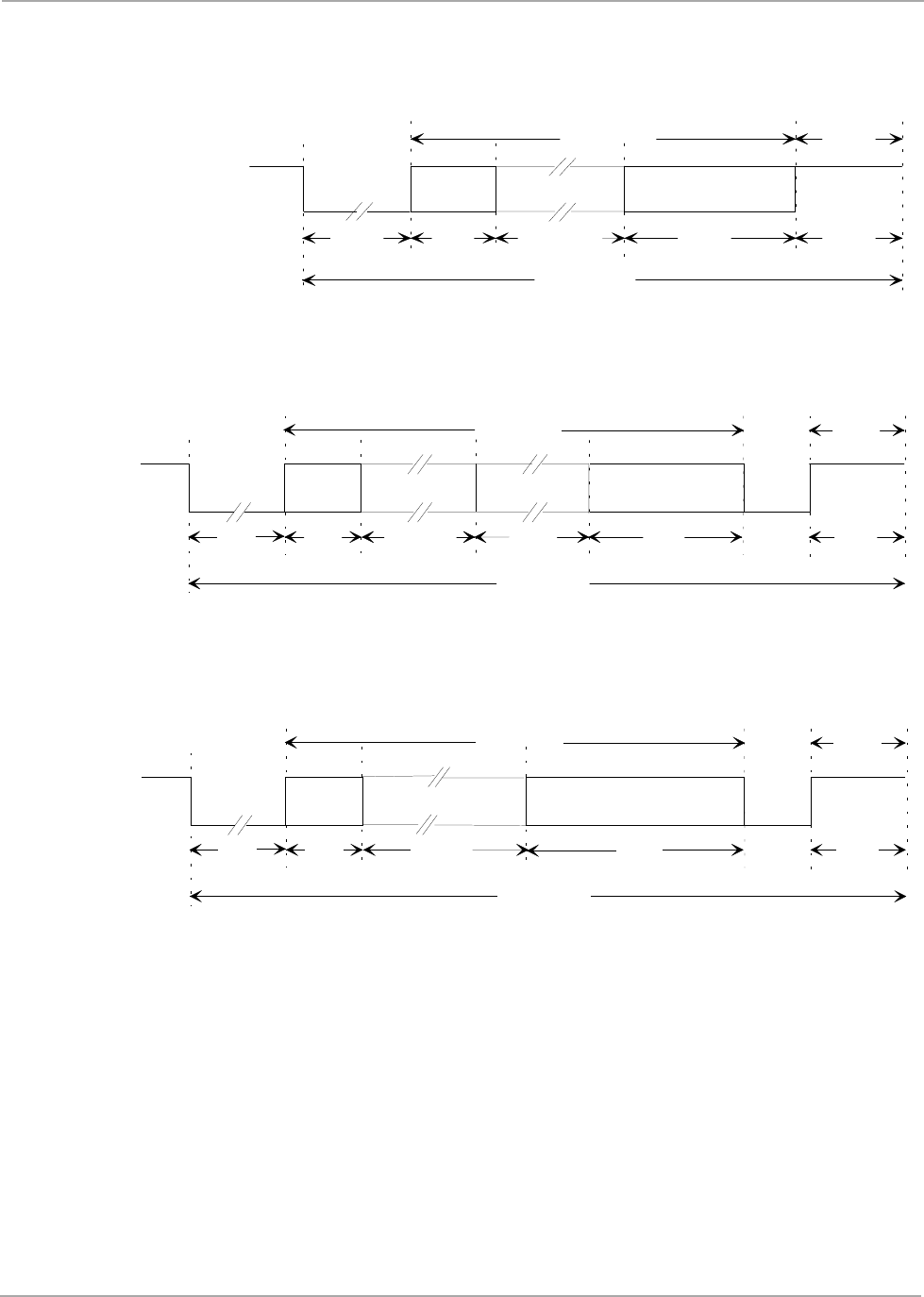
26
Micro-reader - Reference Guide May ’00
4.1.3.4 Selective Read Page of SAMPT
Figure 11: Data Format of the Selective Read Page Function
4.1.3.5 Selective Program Page of SAMPT
Figure 12: Data Format of the Selective Program Page Function
4.1.3.6 Selective Lock Page of SAMPT
Figure 13: Data format of the Selective Lock Page function
50 ms
WRITE
ADDRESS
8
WRITE FRAME BCC
16
32 ms
READ OR
20 ms
128 bit
DISCHARGE
LSB MSB
16 ms
SELECTIVE
ADDRESS
ON
OFF
RF TRANSMITTER
POW ER BURST I
8 - 32
16 - 64 ms
134 - 182 ms
32 - 56 bit
50 ms
WRITE
ADDRESS
8
16 ms
READ OR
20 ms
80 16
160 ms 32 ms 15 ms
128 bit
LSB
DISCHARGE
W RITE FRAME BCCWRITE DATA
MSB
ADDRESS
SELECTIVE
ON
OFF
RF TRANSMITTER
POW ER BURST I
PB II
309 - 357 ms
112 - 136 bit
8 - 32
16 - 64 ms
50 ms
WRITE
ADDRESS
8
16 ms
READ OR
20 ms
16
32 ms 15 ms
128 bit
LSB
DISCHARGE
W RITE FRAME BCC
MSB
ADDRESS
SELECTIVE
ON
OFF
RF TRANSMITTER
POW ER BURST I
PB II
8 - 32
16 - 64 ms
32 - 56 bit
149 - 197 ms
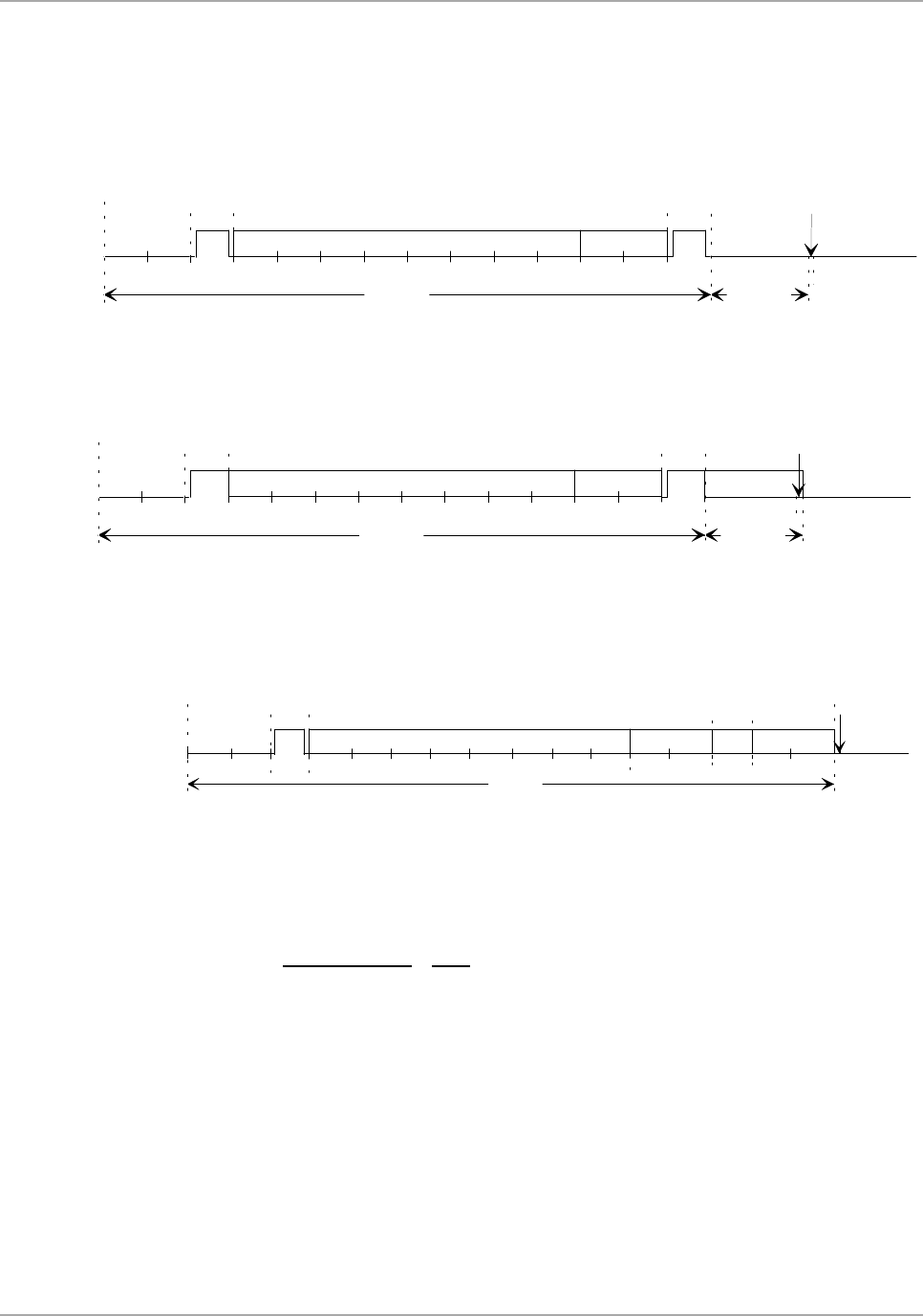
27
May ’00 Chapter 4. Transponder Protocols
4.2 Transponder Responses
This section shows the response telegrams of the current TIRIS transponder types.
4.2.1 Read Only Transponder
Figure 14: RO Read Data Format
4.2.2 Read/Write Transponder
Figure 15: R/W Read Data Format
4.2.3 MPT/SAMPT
Figure 16: MPT/SAMPT Read Data Format
The Read Address consists of a 2-bit status field and a 6-bit page field. The status
field provides information about the function the multipage transponder has executed
and the page field shows which page was affected.
READ ADDRESS
MSB LSB
P P P P P P C C
||
PAGE COMMAND
MSB LSB MSB LSB
Page 1 000001 00 Read unlocked page
Page 2 000010 01 Programming done
. . . 10 Read locked page
Page 16 010000 11 Reserved *
Page 17 010001
000000 00 Read unlocked page, locking not correctly executed
000000 01 Programming done, but possibly not reliable
000000 10 Read locked page, but locking possibly not reliable
START
8
16 8
STOP
64 16
DISCHARGE
LSB
PRE BITS END BITS
IDENTIFICATION DATA DATA BCC
MSB
16 bits
16
112 bits
READ DATA
START
8
16 8
READ DATA
STOP
64 16
DISCHARGE
15
LSB
PRE BITS END BITS
IDENTIFICATION DATA DATA BCC
MSB
112 bits 16 bits
IDENT. DATA
START
8
16
8
16
READ DATA ADDR.
READ
128 bit
64
16
LSB
IDENTIFICATION DATA
MSB
FBCC
DBCC
PRE BITS
DISCHARG
E

28
Micro-reader - Reference Guide May ’00
*) If the status indicates 'Reserved', the read data cannot be interpreted as identifi-
cation data.
Note:
It is strongly recommended to verify whether the requested function
has actually been carried out in the transponder by checking the Read
Address. If a 'not reliable' response message is received, the com-
mand must be sent again to guarantee transponder data retention.

CHAPTER 5
29
Communication Protocol Examples
Chapter 5: Communication Protocol Examples
This chapter provides some examples of some actual commands sent to a transpon-
der and some possible responses.
Topic Page
5.1 PC to Micro-reader.....................................................................................30
5.1.1 Read RO, R/W .....................................................................................30
5.1.2 Program R/W Transponder ..................................................................30
5.1.3 General Read Page of MPT.................................................................31
5.1.4 Program Page of MPT .........................................................................31
5.1.5 Lock Page of MPT................................................................................31
5.1.6 Selective Read Page of SAMPT ..........................................................32
5.1.7 Selective Program Page of SAMPT .....................................................32
5.1.8 Selective Lock Page of SAMPT ...........................................................33
5.2 Micro-reader to PC.....................................................................................33
5.2.1 Successful Read of RO........................................................................33
5.2.2 Successful Program Page 2 of MPT ....................................................34
5.2.3 No Read ...............................................................................................34

30
Micro-reader - Reference Guide May ’00
5.1 PC to Micro-reader
5.1.1 Read RO, R/W
Byte Content Comment Description
(hex)
0 01 Start Mark
1 02 Length Two bytes follow excluding BCC
2 08 Command Perform Single command, send Power Burst I
Field (1)
3 32 Data Field (1) Power Burst I with 50 ms duration (charge-up)
4 38 BCC BCC over previous bytes excluding Start Mark
5.1.2 Program R/W Transponder
The following sequence of bytes programs a R/W transponder with:
00 00 00 00 00 00 00 01
MSByte LSByte
Byte Content Comment Description
(hex)
0 01 Start Mark
1 11 Length 17 bytes follow excluding BCC
2 E8 Command Perform Single command, no FBCC calculation,
Field (1) send Power Burst I & II with Data
Command Field (2) follows
3 06 Command Wireless synchronization, calculate DBCC of the
Field (2) R/W and MPT write data
4 32 Data Field (1) Power Burst I with 50 ms duration (charge-up)
5 0F Data Field (2) Power Burst II with 15 ms duration (Progr. burst)
6 0C Data Field (3) 12 Data Fields follow
7 BB Data Field (4) Write Keyword
8 EB Data Field (5) Write Password
9 01 Data Field (6) Programming data (LSByte)
10 00 Data Field (7) Programming data
11 00 Data Field (8) - : -
12 00 - : - - : -
13 00 - : - - : -
14 00 - : - - : -
15 00 - : - - : -
16 00 Data Field (13) Programming data (MSByte)
17 00 Data Field (14) Write Frame
18 03 Data Field (15) Write Frame
19 9C BCC BCC over previous bytes excluding Start Mark

31
May ’00 Chapter 5. Communication Protocol Examples
5.1.3 General Read Page of MPT
The following sequence of bytes reads page 2 of an MPT.
Byte Content Comment Description
(hex)
0 01 Start Mark
1 04 Length Four bytes follow excluding BCC
2 48 Command Perform Single command, send Power Burst I
Field (1) with data
3 32 Data Field (1) Power Burst I with 50 ms duration (charge-up)
4 01 Data Field (2) One Data Field follows
5 08 Data Field (3) Write Address specifying General Read Page 2
6 77 BCC BCC over previous bytes excluding Start Mark
5.1.4 Program Page of MPT
The following sequence of bytes programs page 2 of an MPT with:
00 00 00 00 00 2D C6 47
MSByte LSByte
Byte Content Comment Description
(hex)
0 01 Start Mark
1 0F Length 15 bytes follow excluding BCC
2 6C Command Perform Single command, calculate FBCC,
Field (1) send Power Burst I & II with Data
3 32 Data Field (1) Power Burst I with 50 ms duration (charge-up)
4 0F Data Field (2) Power Burst II with 15 ms duration (Progr. burst)
5 0B Data Field (3) 11 Data Fields follow
6 09 Data Field (4) Write Address specifying Program Page 2
7 47 Data Field (5) Programming data (LSByte)
8 C6 Data Field (6) Programming data
9 2D - : - - : -
10 00 - : - - : -
11 00 - : - - : -
12 00 - : - - : -
13 00 Data Field (11) Programming data
14 00 Data Field (12) Programming data (MSByte)
15 96 Data Field (13) DBCC (LSByte)
16 50 Data Field (14) DBCC (MSByte)
17 36 BCC BCC over previous bytes excluding Start Mark
5.1.5 Lock Page of MPT
The following sequence of bytes locks page 2 of an MPT.
Byte Content Comment Description

32
Micro-reader - Reference Guide May ’00
(hex)
0 01 Start Mark
1 05 Length Five bytes follow excluding BCC
2 6C Command Perform Single command, calculate FBCC,
Field (1) send Power Burst I & II with data
3 32 Data Field (1) Power Burst I with 50 ms duration (charge-up)
4 07 Data Field (2) Power Burst II with 15 ms duration (Progr. burst)
5 01 Data Field (3) One Data Field follows
6 0A Data Field (4) Write Address specifying Lock Page 2
7 5F BCC BCC over previous bytes excluding Start Mark
5.1.6 Selective Read Page of SAMPT
The following sequence of bytes reads page 2 of an SAMPT.
The 24 bit selective address = 12 34 56
MSByte LSByte
Byte Content Comment Description
(hex)
0 01 Start Mark
1 07 Length 7 bytes follow excluding BCC
2 4C Command Perform Single command, calculate FBCC,
Field (1) send Power Burst I with Data
3 32 Data Field (1) Power Burst I with 50 ms duration (charge-up)
4 04 Data Field (2) 4 Data Fields follow
5 0B Data Field (3) Write Address specifying selective Read Page 2
6 56 Data Field (4) Selective Address LSB
7 34 Data Field (5) Selective Address
8 12 Data Field (6) Selective Address MSB
9 06 BCC BCC over previous bytes excluding Start Mark
5.1.7 Selective Program Page of SAMPT
The following sequence of bytes selective programs page 2 of an SAMPT with:
00 00 00 00 00 00 00 11
MSByte LSByte
The 24 bit selective address = 12 34 56
MSByte LSByte
Byte Content Comment Description
(hex)
0 01 Start Mark
1 12 Length 18 bytes follow excluding BCC
2 6C Command Perform Single command, calculate FBCC,
Field (1) send Power Burst I & II with Data
3 32 Data Field (1) Power Burst I with 50 ms duration (charge-up)
4 0F Data Field (2) Power Burst II with 15 ms duration (Progr. burst)
5 0E Data Field (3) 14 Data Fields follow

33
May ’00 Chapter 5. Communication Protocol Examples
6 09 Data Field (4) Write Address specifying Program Page 2
7 56 Data Field (5) Selective Address LSB
8 34 Data Field (6) Selective Address
9 12 Data Field (7) Selective Address MSB
10 11 Data Field (8) Programming data (LSByte)
11 00 Data Field (9) Programming data
12 00 - : - - : -
13 00 - : - - : -
14 00 - : - - : -
15 00 - : - - : -
16 00 - : - - : -
17 00 Data Field (15) Programming data (MSByte)
18 9F Data Field (16) DBCC (LSByte)
19 BD Data Field (17) DBCC (MSByte)
20 34 BCC BCC over previous bytes excluding Start Mark
5.1.8 Selective Lock Page of SAMPT
The following sequence of bytes locks page 2 of an SAMPT.
The 24 bit selective address = 12 34 56
MSByte LSByte
Byte Content Comment Description
(hex)
0 01 Start Mark
1 08 Length 8 bytes follow excluding BCC
2 6C Command Perform Single command, calculate FBCC,
Field (1) send Power Burst I & II with Data
3 32 Data Field (1) Power Burst I with 50 ms duration (charge-up)
4 0F Data Field (2) Power Burst II with 15 ms duration (Progr. burst)
5 04 Data Field (3) 4 Data Fields follow
6 0A Data Field (4) Write Address specifying selective Lock Page 2
7 56 Data Field (5) Selective Address LSB
8 34 Data Field (6) Selective Address
9 12 Data Field (7) Selective Address MSB
10 27 BCC BCC over previous bytes excluding Start Mark
5.2 Micro-reader to PC
5.2.1 Successful Read of RO
Byte Content Comment Description
(hex)
0 01 Start Mark
1 09 Length 9 bytes follow excluding BCC
2 0C Status Valid RO, Startbyte detected, DBCC O.K.
3 6A Data Field (1) Identification Data (LSByte)

34
Micro-reader - Reference Guide May ’00
4 58 Data Field (2) Identification Data
5 4C - : - - : -
6 00 - : - - : -
7 00 - : - - : -
8 00 - : - - : -
9 00 Data Field (7) Identification Data
10 00 Data Field (8) Identification Data (MSByte)
11 7B BCC BCC over previous bytes excluding Start Mark
5.2.2 Successful Program Page 2 of MPT
Byte Content Comment Description
(hex)
0 01 Start Mark
1 0A Length 10 bytes follow excluding BCC
2 1E Status Valid MPT, Startbyte detected, DBCC O.K.,
FBCC O.K.
3 47 Data Field (1) New Identification Data (LSByte)
4 C6 Data Field (2) New Identification Data
5 2D - : - - : -
6 00 - : - - : -
7 00 - : - - : -
8 00 - : - - : -
9 00 Data Field (7) New Identification Data
10 00 Data Field (8) New Identification Data (MSByte)
11 09 Data Field (9) Read Address specifying successful progr. of
page 2
12 B1 BCC BCC over previous bytes excluding Start Mark
5.2.3 No Read
Byte Content Comment Description
(hex)
0 01 Start Mark
1 01 Length One byte follows excluding BCC
2 03 Status Other, no Startbyte, DBCC not O.K., FBCC not
O.K.
3 02 BCC BCC over previous bytes excluding Start Mark

APPENDIX A
35
CE Declaration
Appendix A: CE Declaration
The Micro-reader module complies with the European CE requirements specified in
the EMC Directive 89/336/EEC. The relevant documentation numbers are:
Declaration of Conformity11-06-02-005
Type Examination Certificate11-06-05-001
If the Micro-reader is operated from a mains power supply, all power connections and
additional components of the final device must comply with the European EMC di-
rective.
Additional connections may have a length of up to 2 m maximum, or in fixed installa-
tions up to 1 m maximum.
European customers must themselves make sure that the final device conforms to
the European EMC Directive.
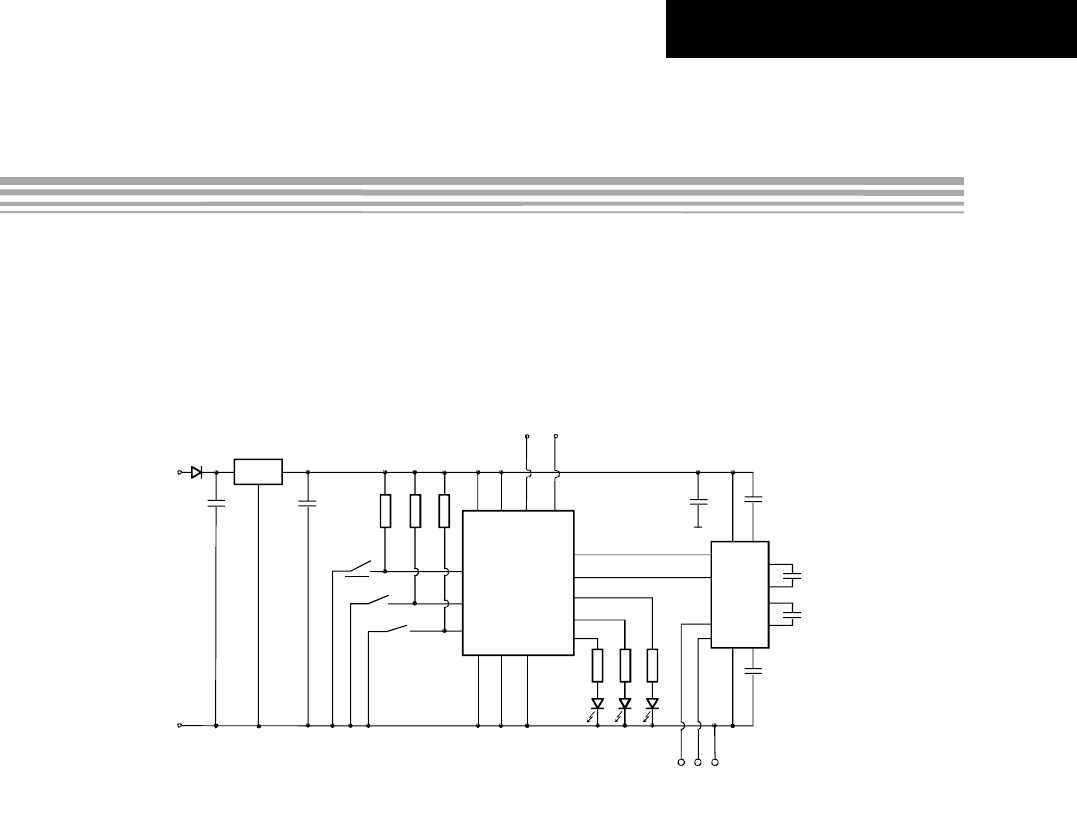
APPENDIX B
36
Demonstration Circuit
Appendix B: Demonstration Circuit
The Micro-reader module can be demonstrated using the circuit shown in Figure 17.
Figure 17: Micro-reader Demonstration Circuit
L78M05CV
24 22 19 16
ANTENNA
MICROREADER +
+
+
6
15
14
13
+
12
11
16 2
1
3
4
5
+
RS 232C
+5V
0.1 µF
10 µF
25V
10 µF
25V
10 µF
25V
10 µF
25V
10 µF
25V
10 µF
25V
240Ω
240Ω
240Ω
SYNC
STAT
OKT
5
6
29
30
1
21 15 25
2
26
27
10K
10K
10K
RDEN
CRDM
WLSC
MAX232
3 2 5
0V
+ DC IN
- DC IN
NB: For design-in we recommend the SIPEX SP232 for the
line driver chip to avoid potential interference problems
+
0V
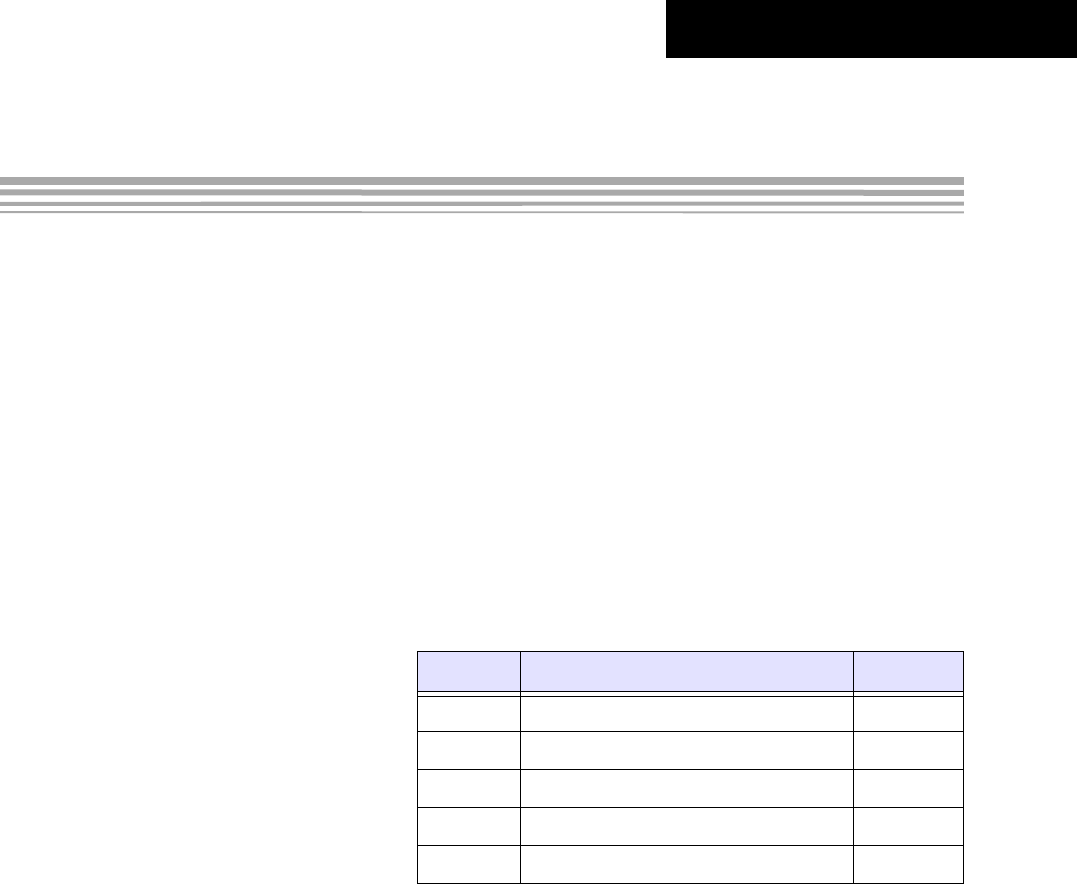
APPENDIX C
37
Antenna Design
Appendix C: Antenna Design
C.1 Introduction
This appendix gives an example of how you could construct an antenna to work with
the micro-reader. It also provides information about calculating the Q factor and
adapting the inductance range.
The antenna properties should be:
Q factor less than 20
Inductance between 46 and 48 µH
Recommended maximum size 200 mm x 200 mm
C.2 Antenna Construction
Item List:
Method:
- Wind 15 turns of item 1 with a diameter of 75 mm.
- Leave about 50 mm free at the ends, cross the wires (at the +/- 50 mm point)
and secure them together using the tape (item 2).
- twist the spriband (item 4) onto the coil that you have just made, leaving the
start and finish ends free.
- Strip the insulating braid back at the end of the antenna lead (item 5). Wrap
the start and finish ends at least three times around the bared ends and solder
the joints (the polarity is not important).
- Tightly bind the soldered joints to the spriband using the cloth tape (item 3).
This method should result in a 47 µH antenna with a quality factor of
approximately 17 - 18.
Item Description Quantity
1 Enamelled solid copper wire, 0.2 mm 2.1 g
2 Tape, 10 mm wide 20 mm
3 Block cloth tape, 12 mm wide 0.12 m
4 Spiroband, 3 mm diameter 0.24 m
5 Screened antenna lead 1 m

38
Micro-reader - Reference Guide May ’00
C.3 Q Factor
If the antenna’s Q factor exceeds 20:
1. The output capacitors will be overloaded and long term damage could result.
2. The antenna may still be resonating when the response from the transponder is
received. Without built-in damping the data will not be correctly received.
3. The antenna may be detuned if there is any metal in the area.
The following formula provides an approximate method of calculating the Q factor of
the antenna:
Where: f = 134200 Hz (Frequency = 134.2 kHz)
L = Inductance (henry)
R = Series resistance (ohm)
Example:
The inductance (L) = 47µH.
The resistance (R) = 2.2 Ohm.
=18
C.4 Adapting the Inductance Range
If your antenna is outside of the required inductance range of 46 to 48 µH, you can
adapt it to work with the micro-reader by adding an external capacitor to it, either in
series or in parallel. You can use this external capacitor to change the inductance
range by ± 5 µH.
You can work out the total resonance capacity using the following formula:
If the antenna inductance is less than 46.1 µH you can add an extra capacitor (exter-
nally) to the antenna between pin 16 (ANT1) and pin 17 (ANTCAP). The formula to
work out the value of this capacitor is:
If the antenna inductance is more than 47.9 µH you can add an extra capacitor in se-
ries with the antenna between pin 19 (ANT2) and the antenna. The formula to work
out the value of this capacitor is:
Q2πfL
R
------------=
Q2π× 134200
×0.000047
×
2.2
-----------------------------------------------------------------=
39.636
2.2
------------------=
Ctot 14
π2LAntf2
⁄
=
Cext Ctot 30ηF
–=
1
Cext
----------- 1
Ctot
-----------1
30ηF
--------------
–=